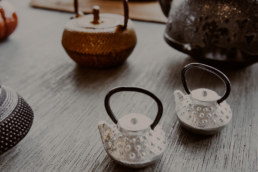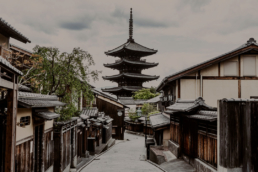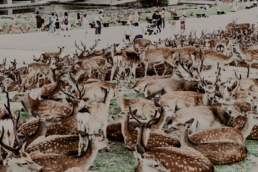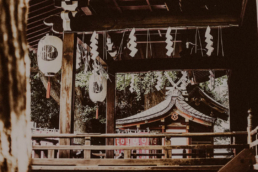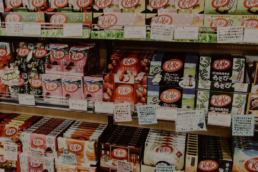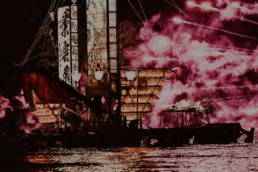Focus on: ferro Nambu
Se pensiamo ad un tipico arredamento giapponese, ci vengono subito in mente una teiera in ferro, noto anche come Nambu.
Il ferro Nambu e la sua storia
Autore: Erika | Fonte: Tokyo Weekender
Nambu Tekki, ovvero il ferro Nambu è un metodo di lavorazione del ferro tipico della città di Morioka nella prefettura di Iwate. Creata nel mezzo del periodo Edo, questa lavorazione artigianale prende il nome di Nambu dall’omonimo dominio feudale. Le tecniche moderne utilizzano anche il metallo fuso prodotto vicino a Morioka, in Sendai o nell’attuale città di Oshu.
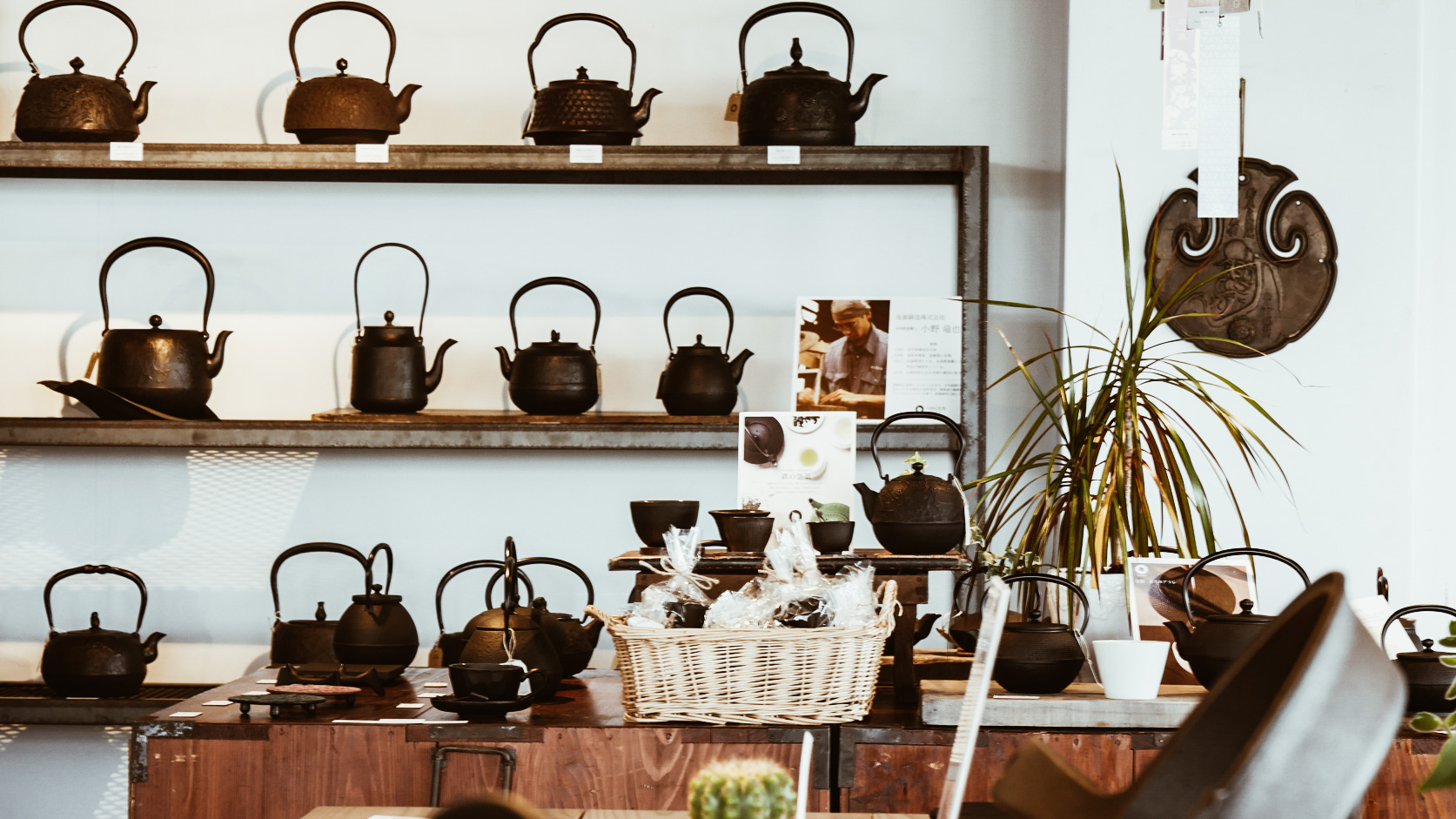
Resistenti alla ruggine, durature e ben isolate, questi oggetti forniscono una circolazione uniforme del calore. Infatti, l’esterno dei bollitori ha una trama irregolare chiamata arare o grandine. Questa viene utilizzata spesso nelle stoviglie di ferro Nambu e i bollitori ne sono il prodotto rappresentativo. Tuttavia, i vari modelli cambiano da artigiano ad artigiano poiché ogni artista è libero di creare il suo modello a piacimento.
La Storia del Ferro Nambu
I prodotti in ferro Nambu affondano la loro storia sulla produzione di stoviglie per la cerimonia del Tè durante l’omonimo dominio a metà del XVII secolo. Grazie all’abbondanza di risorse di ferro, Morioka è stata un’area perfetta per l’industria della fonderia.
Infatti, nel 1659, un signore feudale che voleva promuovere la cerimonia del tè, ordinò a Nizaemon Koizumi di trasferirsi a Kyoto. Proprio qui, nell’area intorno al castello a Nambu, iniziò la produzione dei bollitori.
La Famiglia Koizumi
Artigiani per eccellenza durante il dominio Nambu, questa famiglia lanciò per la prima volta le pentole utilizzate per la cerimonia del tè. La tecnica di colata del tè e il controllo furono tramandate infatti di padre in figlio. Non solo prodotti tradizionali, ma questa famiglia fu anche fulcro di innovazioni per l’epoca. Infatti, il famoso Bollitore di ferro Nambu fu inventato dalla terza generazione della famiglia Koizumi. Lo stesso imperatore Taisho che regnò dal 1912 al 1926, visitò la regione di Tohoku proprio per questa famiglia. Infatti, nel 1908, in occasione della visita, l’ottava generazione dei Koizumi mostrò all’imperatore il processo di produzione di questi utensili in ferro. Questo evento fu talmente famoso che tutti i giornali nazionali dell’epoca ne parlarono. Infatti, ancora oggi tutti i pezzi prodotti nelle zone di Morioka e Mizusawa ad Iwate, sono chiamati “Prodotti Nambu”.
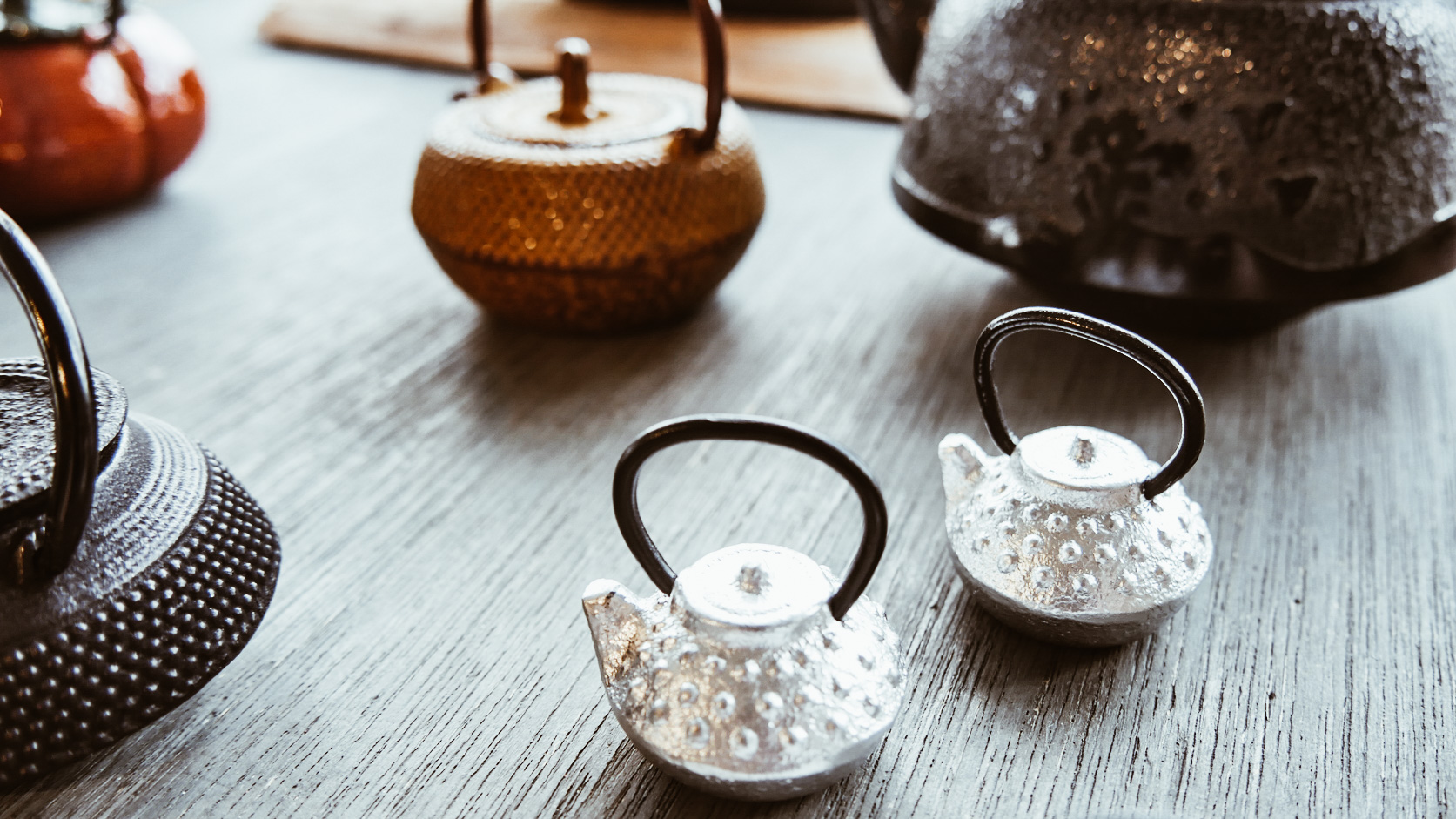
Più che solo per il tè
Nonostante i prodotti legati alla cerimonia del tè siano quelli più famosi tra le produzioni di ferro Nambu, ci sono tanti altri articoli legati alla casa che si possono acquistare. Infatti, i cuochi della cucina occidentale sanno bene che uno dei migliori investimenti che si possono fare è una padella in ghisa.
Tuttavia, altri oggetti in ferro Nambu che si vale la pena di acquistare sono il furin (lo scacciapensieri giapponese), porta incenso, piccole decorazioni ma anche portabacchette.
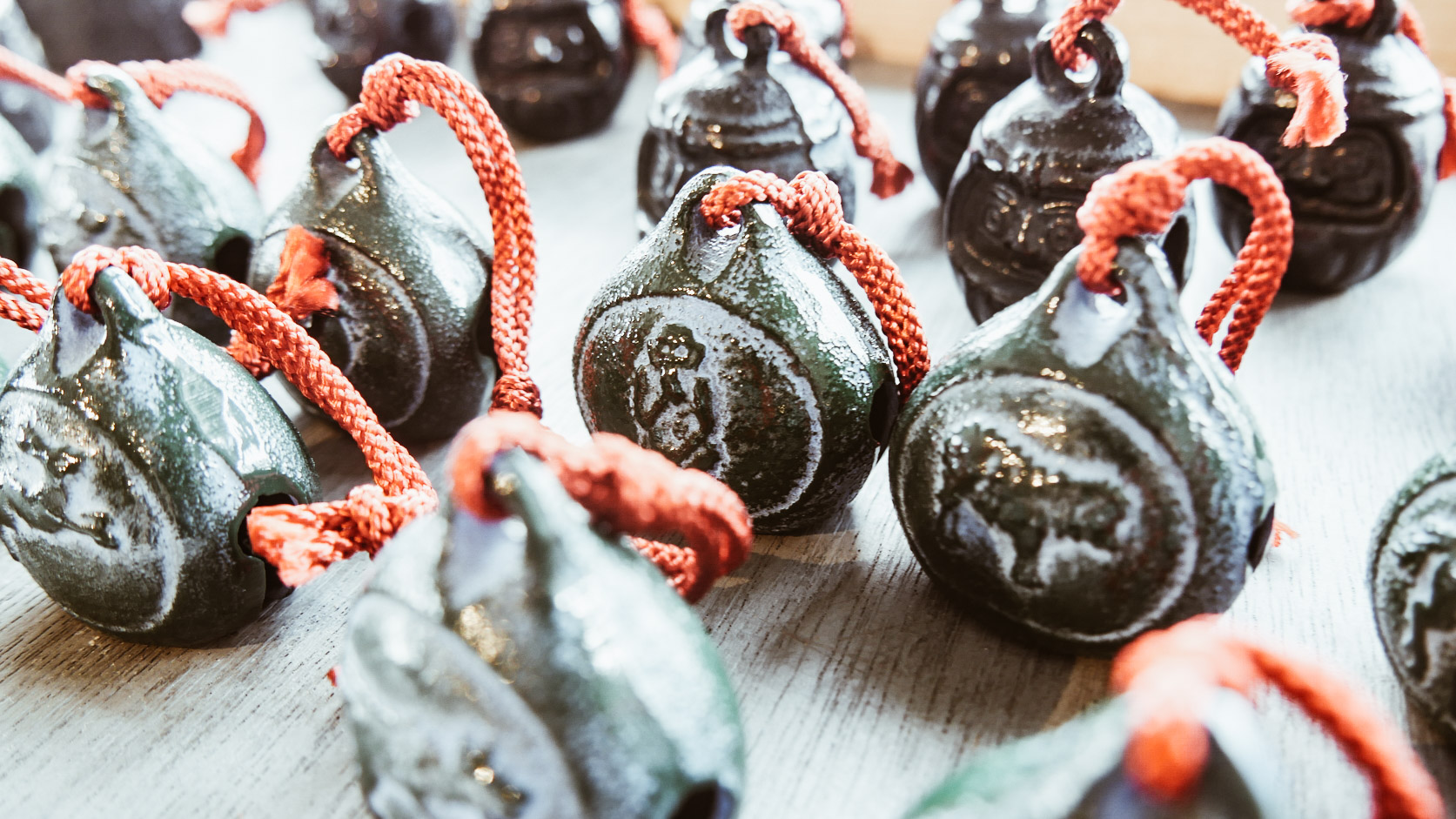
Avete mai acquistato qualcuno di questi prodotti o vi piacerebbe prenderne qualcuno? Fatecelo sapere nei commenti o sulla nostra pagina Facebook!
Photo Gallery: Kyoto senza turisti
La pandemia sta lentamente passando e l'industria del turismo in Giappone, come anche in Italia, ha subito un duro colpo. Riprendere a viaggiare non ci è ancora interamente concesso, tuttavia è in questi momenti che bisogna trovare il bello delle cose. Ci riferiamo anche alla possibilità di riuscire a scoprire paesaggi e angoli di città che prima non riuscivamo a vedere, spesso anche a causa dei turisti. In quanto meta estremamente desiderata dai turisti, Kyoto ha sviluppato un rapporto amore-odio con i visitatori. Con un numero di 8,31 milioni di turisti da oltreoceano, l'antica capitale è decisamente una delle città più popolari in Giappone.
Kyoto senza turisti, un salto nel passato
Autore: Erika | Fonte: The Japan times
Tuttavia, il turismo è sempre un'arma un po' a doppio taglio. Se da un lato pota molti introiti ai paesi visitati, dall'altro porta anche le città ad essere sovraffollate. In luoghi turistici come Kyoto, è veramente raro poter godere dei paesaggi senza visitatori. Ciò nonostante, a causa di COVID-19 e la chiusura delle frontiere mondiali, il numero di visitatori è drasticamente calato, lasciando molti di questi luoghi indisturbati. Attraverso queste foto, scattate dagli inviati di The Japan times a fine aprile, possiamo vedere una città deserta e ammirare i suoi monumenti in tutto il loro splendore.
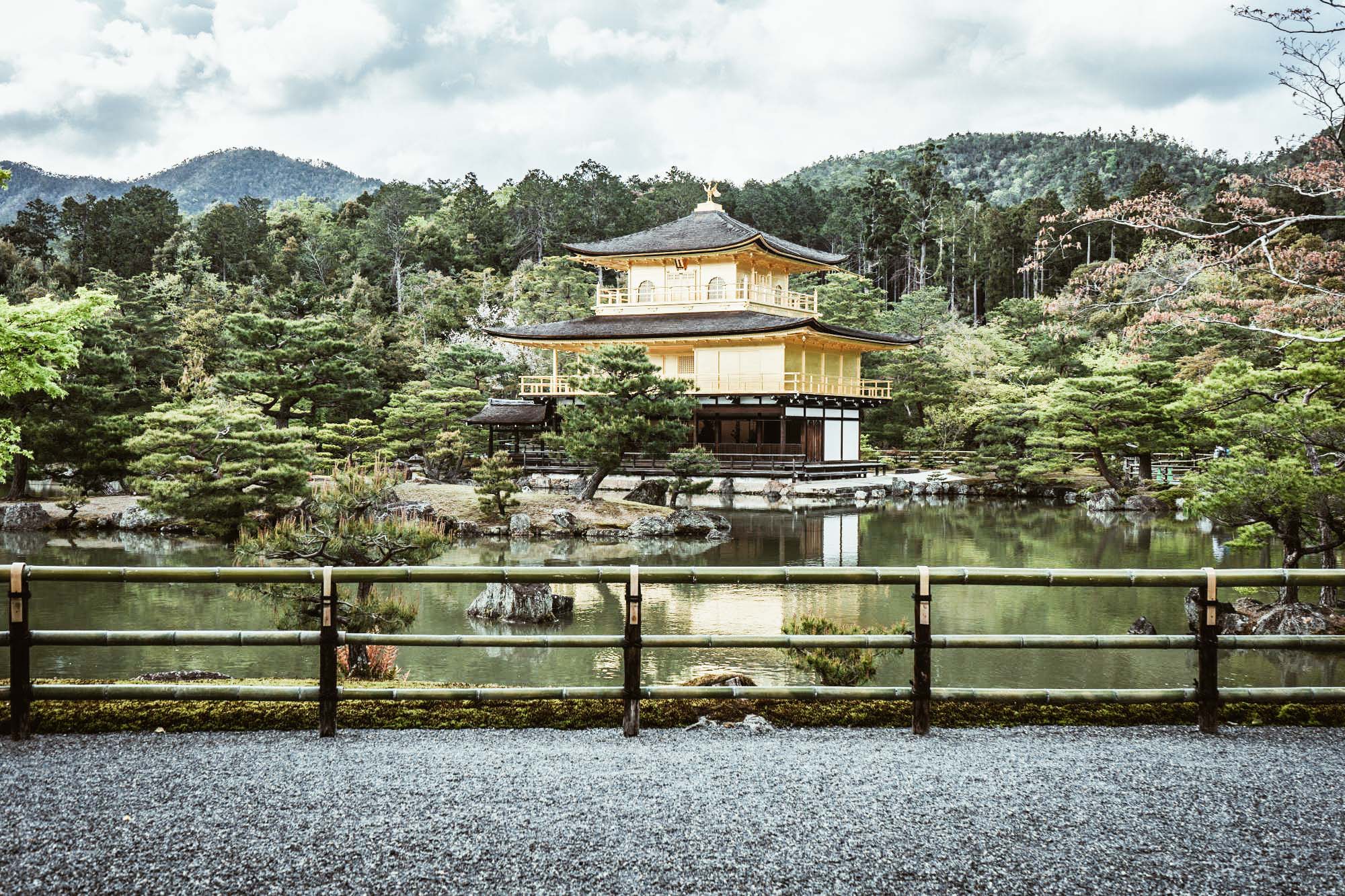
Uno dei siti più famosi e meta di tanti turisti è sicuramente il Kinkakuji, noto anche come Tempio del Padiglione d'Oro. Dichiarato patrimonio dell'UNESCO nel 1994, questo landmark conta più di 5 milioni di visitatori all'anno. L'attuale padiglione risale al 1955 dopo che l'originale fu bruciato da un monaco novizio. Tuttavia il complesso risale al XIV secolo. - Foto di Oscar Boyd

Fushimi Inari, una meta che ogni anno attira circa 2,7 milioni di visitatori, landmark noto per i suoi senbon torii (1000 torii, anche se in realtà sono 10 mila in totale), risultava così. Chi ci è stato lo sa, per poter scattare una foto simile in condizioni normali bisogna recarsi sul posto la mattina prestissimo e attendere diversi minuti per poter avere la perfetta inquadratura del tunnel vuoto. Il fotografo Gabriele Bortolotti ha scattato questa immagine a mezzogiorno, in un santuario deserto a fine aprile.
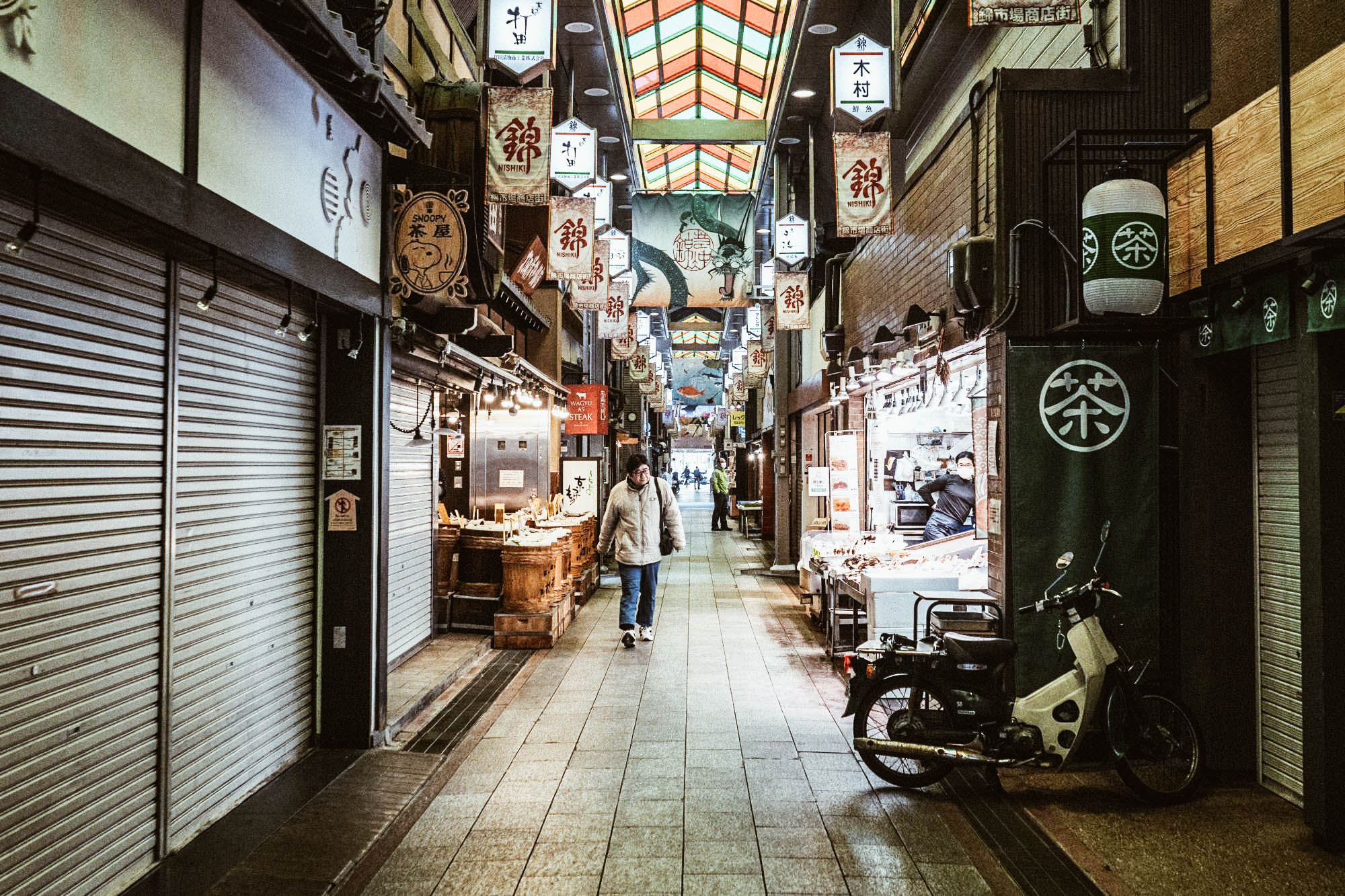
Il mercato di Nishiki, conosciuto anche come "Kyoto's Kitchen" si estende per circa 1,5km fra i quartieri di Teramachi e Shinmachi a Kyoto. Fra negozi di souvenir sempre più diffusi, negozi di coltelli, le sedi dei fornitori di cibi tradizionali giapponesi e tutto ciò che riguarda la cucina, Oscar Boyd ha scattato questa foto.
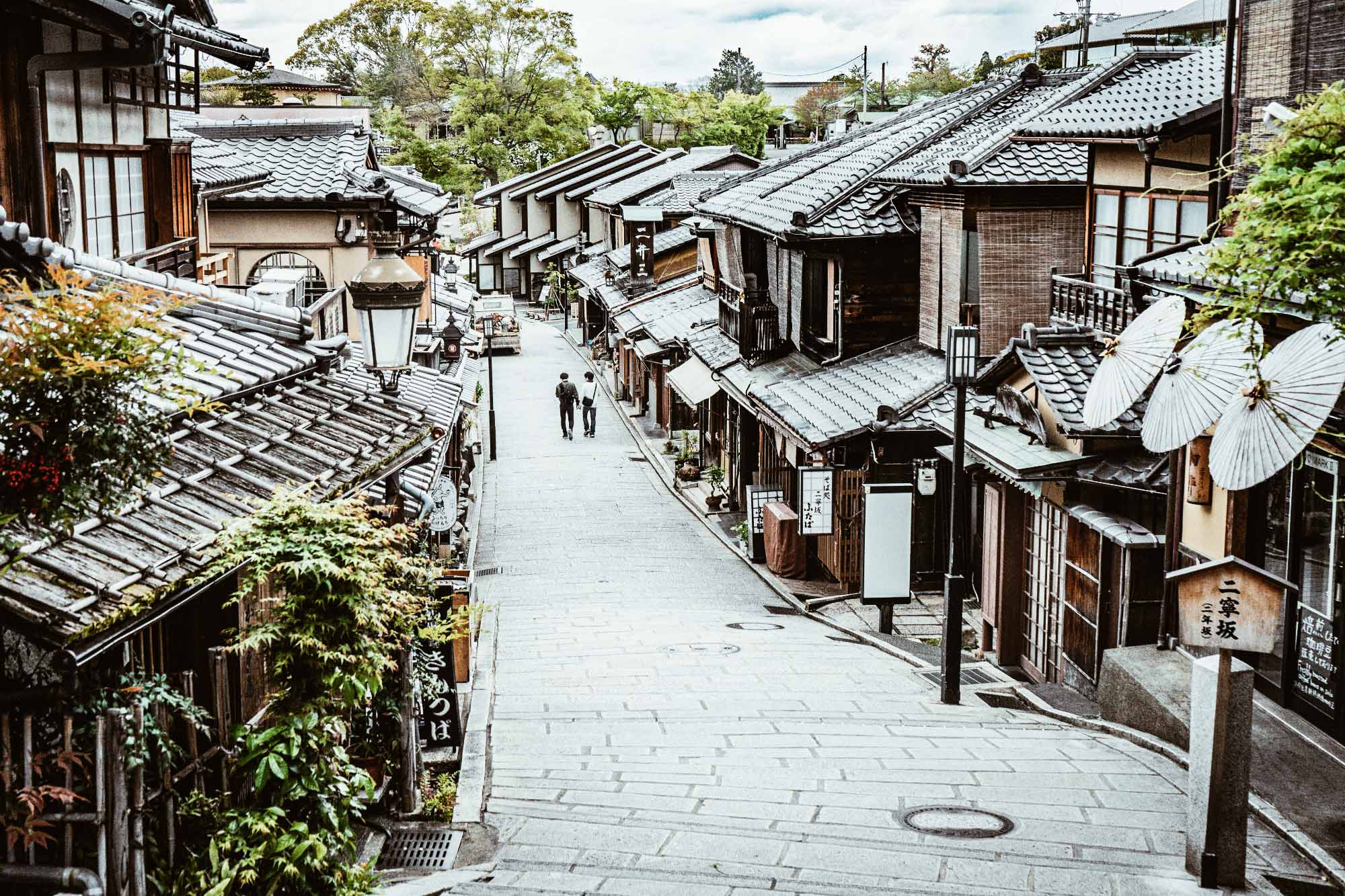
Passiamo alla tradizione architettonica in legno di Higashimaya. Questa zona è popolarissima tra le persone che cercano un Giappone tradizionale, senza cemento, vetro e neon. Così risultava a fine aprile 2020 agli occhi di Oscar Boyd.

Ginkakuji, il Padiglione d'Argento, costruito nel XV secolo seguendo lo stile del Padiglione d'oro in origine non era ricoperto dal prezioso materiale. Il complesso è poi diventato famoso per il suo ampio giardino giapponese che attira circa 5 milioni di visitatori ogni anno. - Foto di Gabriele Bortolotti
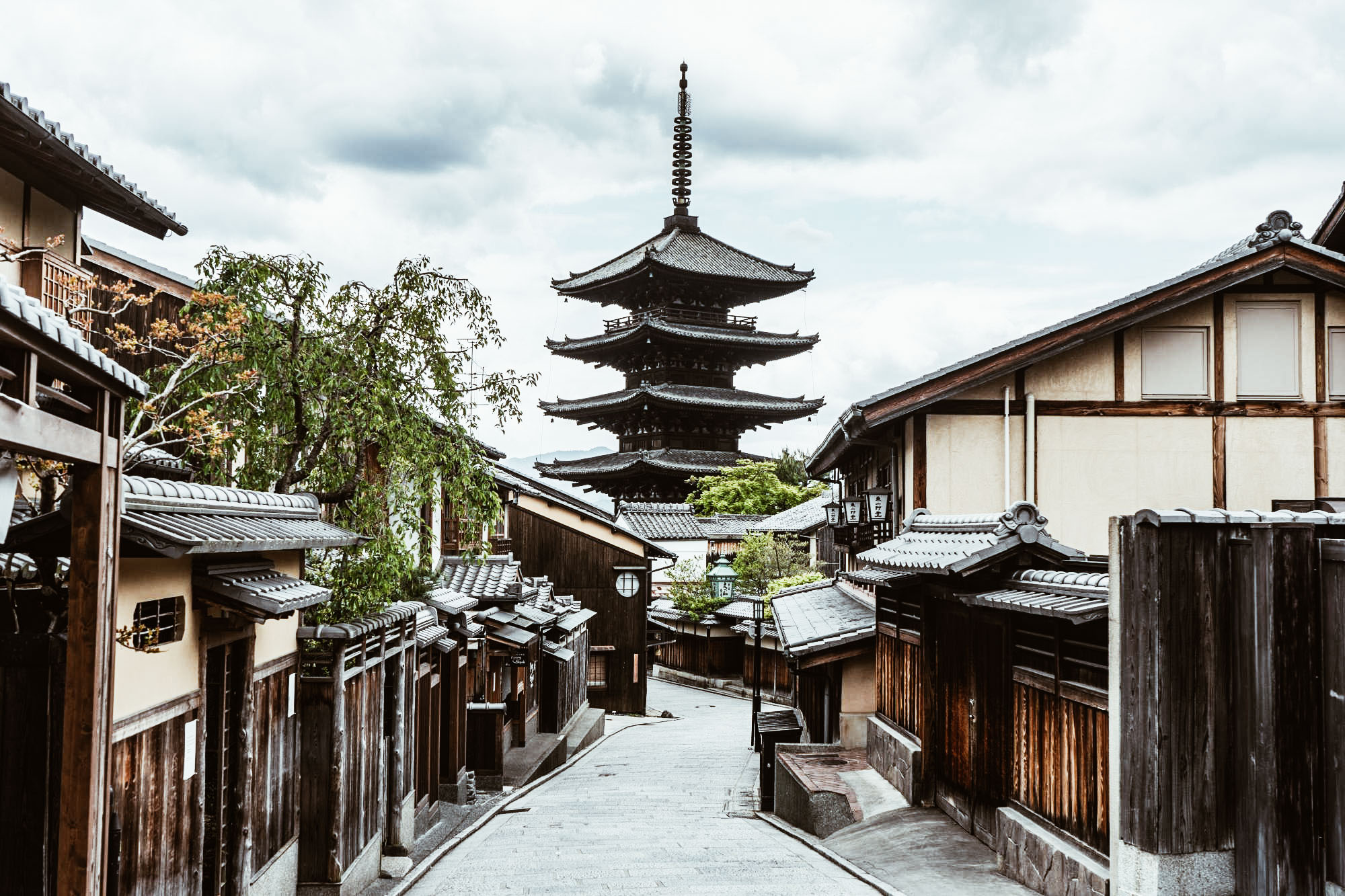
Così era la Pagoda Yasaka, uno dei punti di riferimento della zona superiore del distretto di Higashimaya, ultima struttura permanente del Tempio Hokanji del VI secolo. - Foto di Oscar Boyd
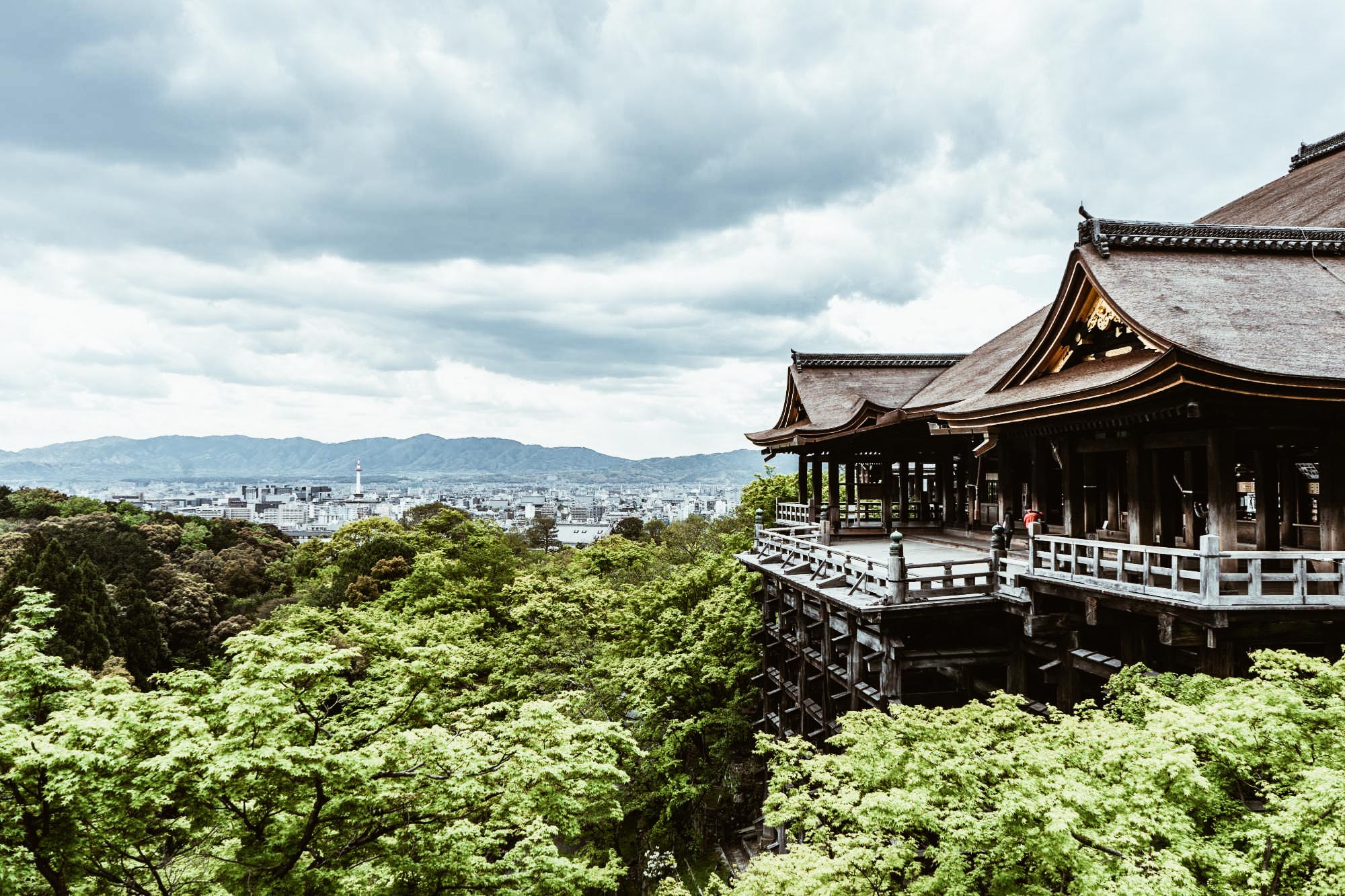
Patrimonio dell'Umanità dell'UNESCO, il tempio Kiyamizudera sul fianco del monte Otowa, nella parte orientale del distretto di Higashimaya è uno dei landmark immancabili per chi visita Kyoto. Fondato nel 780 e ricostruito dopo un incendio nel XV secolo, i lavori della Okunoin Hall sono terminati a marzo. Il tempio attira circa 5 milioni di turisti ogni anno eppure in questo strambo 2020 era completamente vuoto. - Foto di Oscar Boyd
Shikadamari, il raduno dei cervi di Nara
Una delle città più caratteristiche del Giappone è Nara assieme ai suoi cervi e ogni anno è proprio qui che avviene lo Shikadamari. Ma cos'è esattamente questo strano e unico fenomeno? Cosa spinge centinaia di cervi a radunarsi per un'ora in questo posto al parco di Nara tutte le sere in estate?
Shikadamari, il fenomeno del raduno dei cervi di Nara
Autore: Erika | Fonte: Soranews24.com
Se siete mai stati nella città di Nara, vicino alla prefettura di Kyoto, probabilmente una delle mete che sicuramente avrete visto è il parco di Nara e la sua numerosa popolazione di cervi. La particolarità di questi cervi è che girano indisturbati per la città, ma non solo chiedono anche tanti biscotti! Proprio per questo motivo, potrebbe anche esservi capitato di dover scappare da uno di loro, mentre questi cervi curiosi ficcavano il loro naso nelle vostre borse.
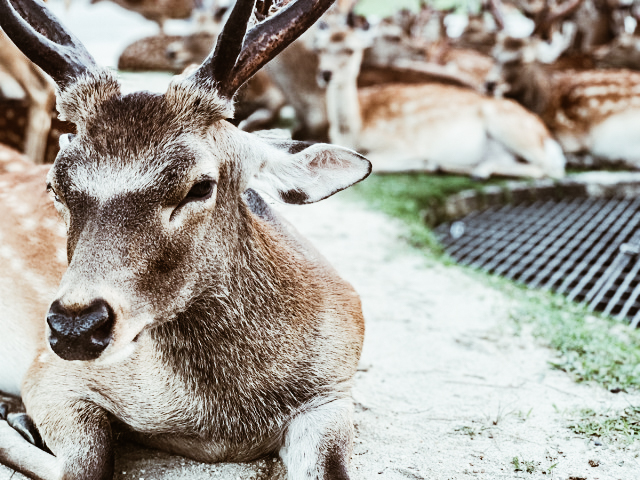
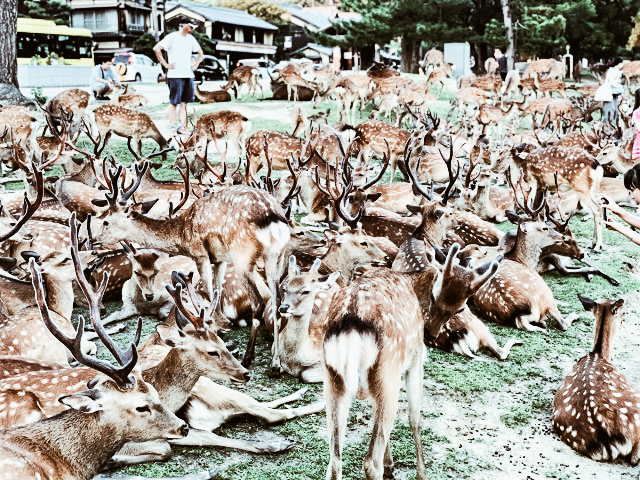
Tuttavia, se siete capitati in questa città nei periodo estivi, alla sera troverete queste simpatiche creature molto meno rumorose. Infatti dopo il tramonto accade un fenomeno molto particolare chiamato "shikadamari". Questo termine giapponese si traduce con "punto di raccolta dei cervi" ed è un termine non ufficiale coniato apposta per questo appuntamento faunistico.
Infatti, dopo il tramonto nelle sere d'estate, verso le 18:30 circa, i cervi si radunano nei pressi del Parco di Nara per fermarsi in questo luogo particolare di fronte al Museo Nazionale di Nara, proprio all'interno del parco. Effettivamente, non è insolito trovare dei cervi che si rilassano all'interno del parco, ma è raro vedere una grossa quantità di questi animali radunato tutti nello stesso punto. La cosa più sconcertante, è che si radunano tutti nello stesso luogo, allo stesso orario e per la stessa quantità di tempo. Dalle 18:30 alle 19:00 infatti, è possibile vedere i cervi seduti in silenzio e, dopo le 19, questi si rialzano in piedi e ritornano nelle diverse zone del parco.
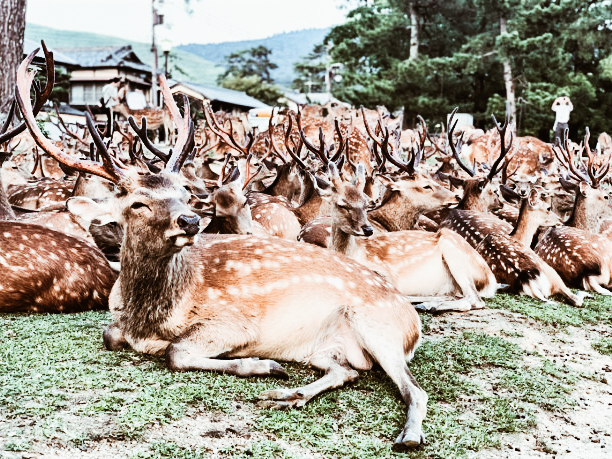
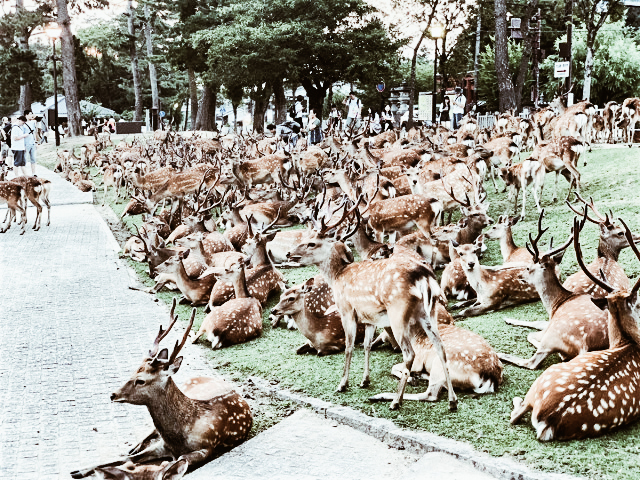
Secondo un indagine della Nara Deer Preservation Foundation, il Parco ospita circa 1388 cervi, e a questo raduno partecipano quasi metà della popolazione faunistica. Cosa potrebbe indicare?
Una delle spiegazioni plausibili per questo fenomeno è che i cervi si radunino in questo particolare posto per rinfrescarsi. Dopotutto, con le temperature cocenti dell'estate giapponese in questo luogo troviamo invece una boccata di aria fresca. Nonostante tutto, proprio questo pezzo di terra davanti al museo è una delle parti più soleggiate di tutto il parco durante la giornata. In teoria quindi, la terra viene molto surriscaldata, ma forse è proprio questo mix di terra calda e aria fresca che attira i cervi per lo shikadamari.

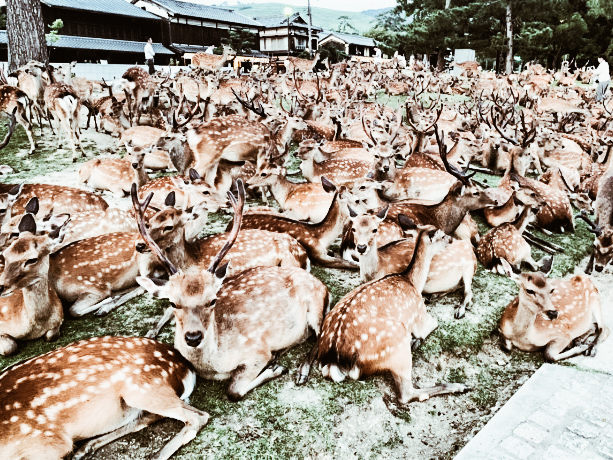
La Nara Deer Preservation Foundation dice:
"Ci risulta che i cervi si radunano davanti al Museo Nazionale del Nara, ma non è stata condotta alcuna indagine sul numero di cervi che vi si radunano. Non sappiamo nemmeno il motivo per cui si riuniscono lì. Ci dispiace di non poter essere di alcun aiuto".
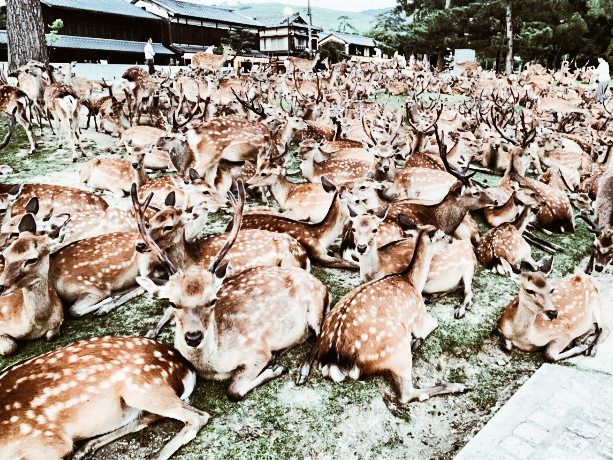
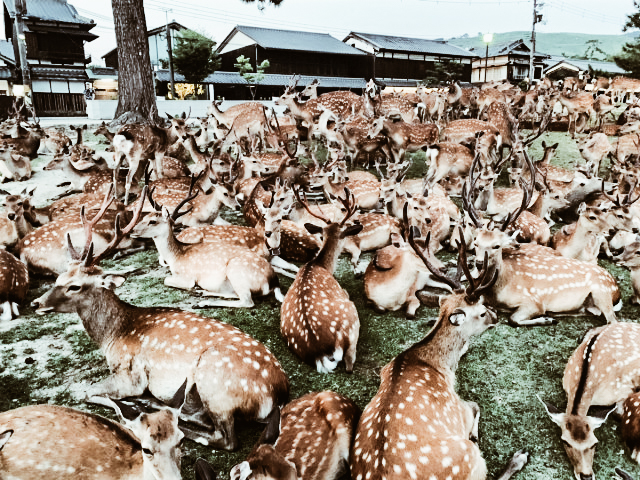
Con questa risposta quindi, il fenomeno Shikadamari rimane a tutti gli effetti uno dei misteri del Giappone. E voi avete qualche idea particolare sul perchè i cervi si radunino tutte le sere in estate proprio in questo punto del parco? Fatecelo sapere sulla nostra pagina Facebook o nei commenti qui sotto!
Il legno e l'architettura giapponese
Se siete mai stati in Giappone o se anche solo avete visto delle foto, avrete notato che l'architettura giapponese è caratterizzata dall'utilizzo del legno come materiale primario. Oggi vediamo come questo materiale tradizionale sia diventato un emblema della giapponesità nell'architettura.
Il legno, muffa e incendi nell'architettura giapponese
Autore: Erika | Fonte: Nippon.com
L'ambiente umido del Giappone ha reso possibile lo sviluppo di uno stile architettonico principalmente focalizzato sull'utilizzo del legno. Infatti, in estate il livelli di umidità raggiungono picchi che difficilmente qui in Europa riusciamo a concepire. Tuttavia, se siete stati in Giappone durante i mesi di giugno e luglio, avrete constatato che si suda anche stando fermi. Proprio per questo motivo, nella storia di questo paese, si sono sviluppate tecniche e materiali che aiutassero a compensare questo problema. Infatti i pavimenti rialzati e gli spazi aperti tipici delle case tradizionali hanno garantito una ventilazione adeguata per combattere l'accumulo di muffe tossiche. Inoltre, la costruzione in legno a montanti e travi non solo aiuta contro l'umidità, ma diventa utile anche nella progettazione per la resistenza ai tifoni e terremoti.
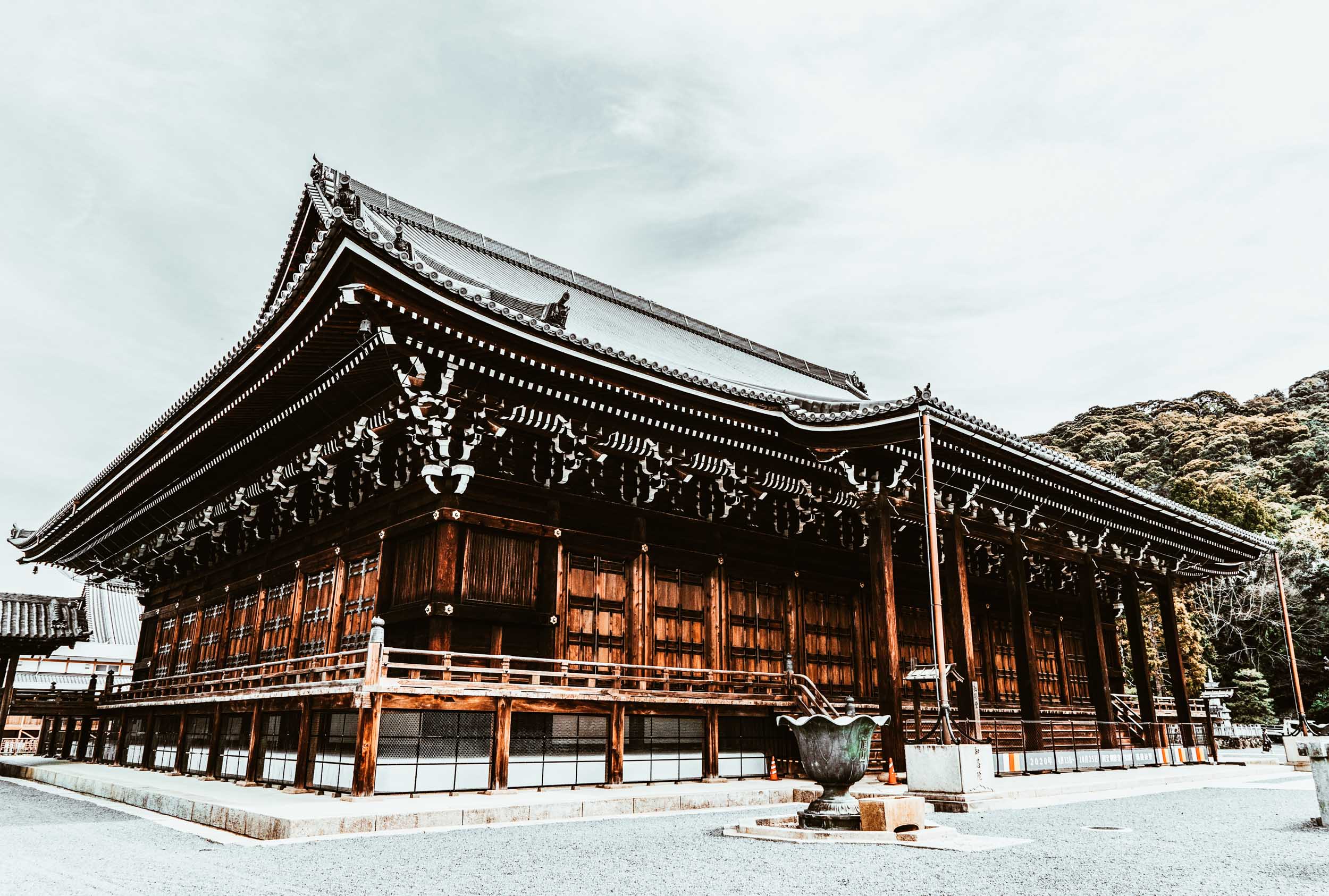

Nonostante gli incendi siano stati frequenti nella storia del Giappone, storicamente i giapponese hanno costruito quasi esclusivamente con il legno. Certamente il fuoco era un problema persistente e questo infatti si riflette sulla severità delle attuali leggi anti incendio. Tuttavia, a giudicare dalla storia, sembra che la maggior causa di problem era dettata dalle catastrofi naturali che hanno portato l'architettura giapponese ad avere le forme che conosciamo tutti.
La presenza costante della muffa nell'architettura giapponese
In realtà, la muffa è un problema costante non solo per il Giappone ma un po' per tutto il mondo. Infatti, oggi siamo riusciti a creare una soluzione applicando tecniche architettoniche moderne.
Gran parte del Giappone ha condizioni ideali a causa dei vari tipi di funghi presenti nel paese. Inoltre, raramente le temperature scendono sotto lo zero e l'umidità può durare anche oltre il 70% per lunghi periodi di tempo. Queste sono tutte condizioni ideali per il formarsi della muffa, ma la tradizionale costruzione in legno alleviava questo problema. Infatti, con queste tecniche di costruzione, l'edifico veniva sollevato dal livello del suolo lasciando i muri aperti in modo che l'aria potesse fluire liberamente negli spazi. Proprio per questo problema, gli edifici più vecchi contengono pochissimi mobili ed attrezzature. I templi, i santuari, palazzi e case tradizionali rientrano in questa categoria.
Il Giappone e la tradizione
Come tutti ben sappiamo, il Giappone è un paese molto tradizionalista e anche l'architettura giapponese non è da meno. Tuttavia c'è una forte preferenza per il nuovo, infatti le grandi imprese non nascondono di progettare le case per far sì che durino circa 30 anni, dopo di ciò la casa dovrebbe essere demolita e ricostruita. Questo è quasi inconcepibile dal punto di vista occidentale, ma la ricostruzione è un mezzo perfetto per eliminare completamente muffe, infestazioni e altri problemi.
La cultura della ricostruzione ha infatti radici antiche in Giappone poiché fino al VIII secolo d.c. la morte di un imperatore era causa di spostamento del palazzo reale e della capitale. Inoltre, esisteva un detto nel periodo Edo che recitava "il fuoco è uno dei due fiori di Edo, poiché la città sbocciava spesso". Che la causa fossero gli incendi o i cambi repentini, questi motivi hanno abbassato significativamente la vita media degli edifici. Tuttavia, spostare una casa significata gettare tutto tranne la struttura in legno, l'intelaiatura veniva infatti smontata e rimontata con un tetto fresco e pareti di tamponamento. Infatti, questo non solo permetteva di risolvere i problema di muffe o altro ma anche di preservare le parti più durevoli di una casa. Proprio per questo motivo, oggi troviamo travi e colonne estremamente antiche e riciclate in molte case coloniche.
Legno VS Metallo
Durante lo shogunato dei Tokugawa, le decisioni politiche hanno limitato l'uso di dispositivi di fissaggio in metallo e anche questo è stato un fattore importante che ha favorito lo sviluppo della falegnameria nell'architettura giapponese. Infatti, nonostante l'acciaio fosse già largamente diffuso, i fissaggi metallici non avevano paragone con la longevità delle giunzioni in legno. Infatti, nel legno non perfettamente stagionati, questi fissaggi erano fortemente soggetti al ritiro stagionale e all'espansione del materiale circostante. Inoltre, se esposti all'aria, sono soggetti a rapida ossidazione a causa del clima umido del Giappone.
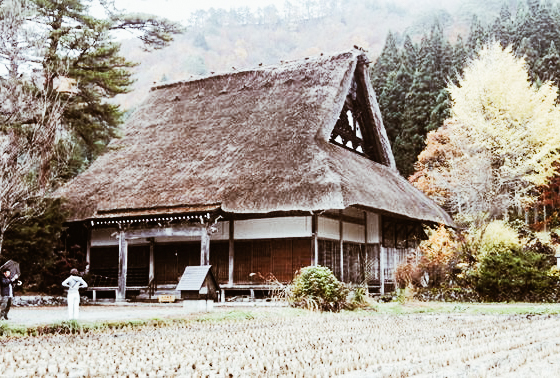
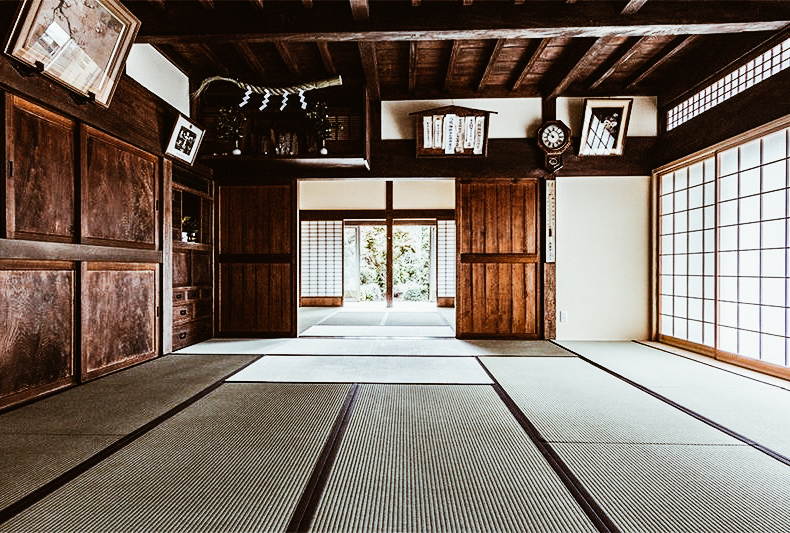
Al contrario, un giunto tutto in legno diventa sempre più forte con il passare del tempo. Infatti, i calcoli dimostrano che questi ultimi possono essere più solidi strutturalmente anche nei secoli successivi alla costruzione. Il legno guadagna in resistenza per 200-300 anni dopo essere stato tagliato, ma diminuisce gradualmente dopo questo traguardo. Proprio per questo motivo, i pesanti tetti dell'architettura giapponese tradizionale sono impossibili da costruire senza una elaborata struttura in legno.
Per resistere alle intemperie e i tifoni, questi tetti dovrebbero essere sostenuti da grossi muri di pietra, tuttavia in un paese dove i terremoti sono così comuni e i tifoni così devastanti, diventa troppo poco pratico. Inoltre, durate la stagione delle piogge, la condensa occuperebbe e rovinerebbe tutte le pareti in muratura. Nella tradizionale architettura giapponese, tutta la struttura portante in legno è aperta all'ispezione visiva, questo significa che qualsiasi infiltrazione d'acqua veniva facilmente identificata e gestita velocemente.
L'architettura giapponese e le case antisismiche
Come ben sappiamo, il Giappone è frequentemente colpito da terremoti che ai nostri occhi sembrano non creare troppi danni. Questo non perchè i terremoti siano meno violenti, ma è grazie alle tecniche antisismiche dell'architettura giapponese. Infatti, la resistenza ai terremoti è la terza ragione per cui nell'architettura giapponese utilizza primariamente il legno nelle sue costruzioni.
Nella cultura occidentale, le case sono solidamente legate alle fondamenta e questo le fa diventare una solida scatola resistente ai terremoti, con pareti abbastanza robuste da resistere alle scosse laterali. Di conseguenza, l'edifico si muoverà con il terreno, facendo però sentire agli occupanti tutta la forza del terremoto. Nella cultura giapponese invece, la costruzione tramite le giunzioni in legno fa si che il tutto diventi più flessibile. In questo modo, l'energia laterale di un terremoto viene assorbita dalle flessioni delle giunzioni stesse permettendo all'edifico con tetto pesante di rimanere in piedi anche duranti le forti scosse. Per farvi capire meglio, molti antichi edifici sono costruiti in modo simile ad una sedia di legno, con pilastri di sostegno senza pareti collegati sia in alto, dove appoggia il tetto, che in basso. Questo permette di sostenere il peso in modo sicuro e dinamico.
Proprio grazie all'utilizzo di questa tecnica, gran parte degli edifici tradizionali non si basano su fondamenta o seminterrati. Tuttavia, ci si potrebbe aspettare che durante un terremoto la struttura salti a partire dalle pietre di base, che le pareti in muratura si rompano e che le travi si pieghino o spezzino. Ma un edifico in legno ben costruito rimane in piedi, infatti anche nell'edilizia contemporanea l'isolamento di base sta diventando uno standard per la progettazione sismica anche se illegale in Giappone.
Tante foreste equivale a tanto legno
Ecco l'ultima motivazione per cui troviamo questa preferenza verso il legno nell'architettura giapponese. Infatti la pronta disponibilità di legname né favorì l'utilizzo nell'edilizia tradizionale, cipresso e pino per esempio sono pronti per la raccolta e l'uso solo dopo 40-60 anni di crescita. I falegnami giapponesi sono infatti diventati esperti nello sfruttare al massimo le tecniche di costruzione in legno da molte generazioni. Questo non solo ha permesso di specializzarsi nell'utilizzo di questo materiale ma ci ha anche lasciato una ricca eredità di costruzioni che non sono solo patrimonio culturale, ma insegnano anche a noi occidentali a poter diventare più sostenibili e sicuri senza rinunciare alla modernità.
I pattern giapponesi
I giapponesi sono famosi per il loro stile e i pattern legati alle stoffe dei kimono, fazzoletti da tasca e altri oggetti hanno fatto storia e rimangono uno dei simboli del Sol Levante. Oggi condividiamo con voi alcuni dei pattern più famosi e cercheremo di analizzarli insieme.
Pattern tradizionali giapponesi, quali sono e cosa significano
Autore: Erika | Fonte: Nippon.com
La tradizione giapponese vuole che i kimono ma anche gli asciugamanti tenugui e altri piccoli oggetti giapponesi siano decorati con delle stoffe ben precise. Infatti spesso troviamo delle decorazioni ben precise su questo tipo di tessuti. Ogni decoro e ogni pattern ha un nome ben preciso e un'origine ben definita che rivela significati nascosti con degli scopi ben precisi. Ecco un breve elenco dei modelli più tradizionali.
Pattern: Uroko (Scaglie)

Creato attraverso la combinazione di triangoli, questo tessuto somiglia alle squame di serpente o pesce. Nella tradizione, i samurai indossavano abiti con questo pattern come talismano protettivo contro il male.
Kōjitsunagi (Personaggi Kō intrecciati)
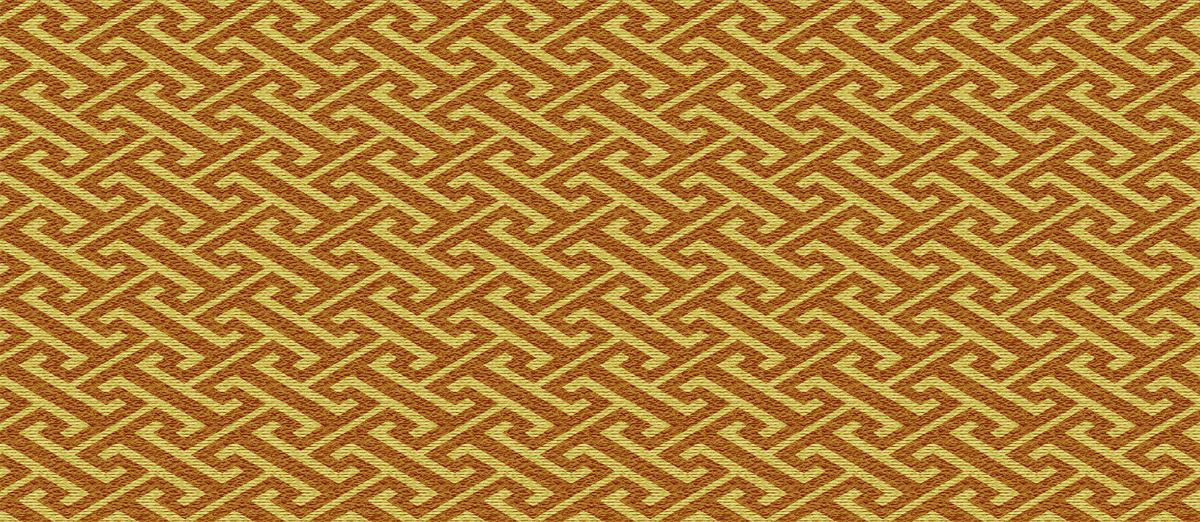
Come spesso troviamo anche nella cultura occidentale, le decorazioni di molti tessuti corrispondono ad un preciso carattere ripetuto in modo grafico. Infatti, questo modelle prende proprio il nome dall'uso del carattere 工 (kō), ripetuto ad incastro in modo che i caratteri sembrano allungarsi all'infinito. Questo tipo di pattern è associato alla fortuna ed è un disegno tipico utilizzato nei materiali per creare i kimono.
Pattern: Asanoha (Foglie di canapa)

Letteralmente chiamato Foglie di Canapa, questo pattern giapponese ha una forte vitalità proprio come la fibra omonima. La canapa è una pianta che cresce vigorosa senza bisogno di molte cure. Infatti, questo è il focus del modello che spesso è utilizzato nella creazione di kimono per bambini e neonati proprio nella speranza che anche loro crescano gradi e forti.
Yabane / Yagasuri (Piume di freccia)

Questo pattern giapponese si basa sullo stilizzare le piume di falco, aquila e altri volatili utilizzati nella fabbricazione di frecce. Dietro a questo tipo di stoffa, come sempre, troviamo un profondo simbolismo. Infatti con il puntamento al bersaglio, le frecce sono state a lungo utilizzate come motivo di buon auspicio. Tuttavia, una volta scattate le frecce non ritornano, e, proprio per questo motivo, nel periodo Edo, alle spose venivano regalati kimono con questo disegno come porta fortuna. Infatti, questo pattern era una sorta di portafortuna per assicurarsi che le mogli novelle non dovessero tornare nella loro casa di famiglia.
Inoltre, alla fine degli anni Settanta, questo pattern divenne famoso grazie a Benio, protagonista di Haikara-san, un manga per adolescenti. Infatti, lei indossava questo tipo di Kimono a scuola e questo portò all'abbinamento con l'hakama bordeaux, un tipo di gonna divisa. Questo portò gli adolescenti a rendere questo pattern giapponese una combinazione popolare alle cerimonie di laurea.
Pattern: Same Komon (pelle di squalo)

Grazie agli archi sovrapposti in piccoli punti, questo pattern giapponese richiama proprio la pelle di squalo e da qui prende il suo nome. Nella tradizione lo troviamo spesso utilizzato dalla famiglia Kishū Tokugawa, alla quale apparteneva lo Shōgun Tokugawa Yoshimune (1684-1751).
Seigaiha (Onde dell'Oceano Blu)

Uno dei nostri preferiti, questo modello ricorda le onde a ventaglio del mare aperto. Il nome deriva proprio dall'antica danza di corte gagaku chiamata appunto Seigaiha. Durante queste performance antiche, i ballerini indossavano costumi proprio con questo motivo.
Shippō (Sette tesori)
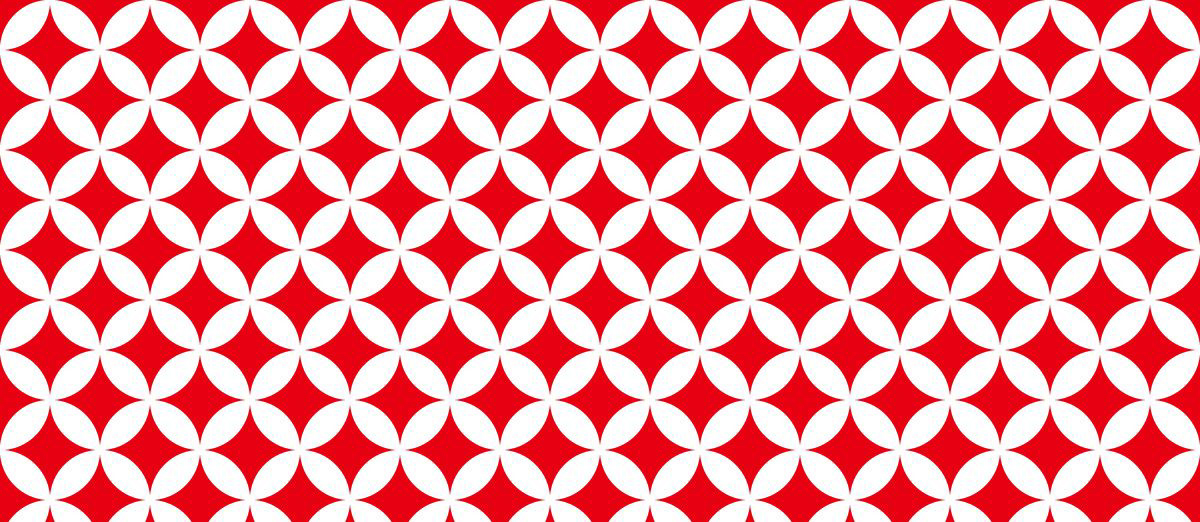
Con cerchi che si sovrappongono in quarti somigliando a petali, il loro centro forma una stella splendente. A questo pattern viene conferito il significato di buon auspicio per la prosperità dei discendenti, le buone relazioni e per portare armonia nelle vostre vite.
Pattern: Kikkō (Tartaruga)
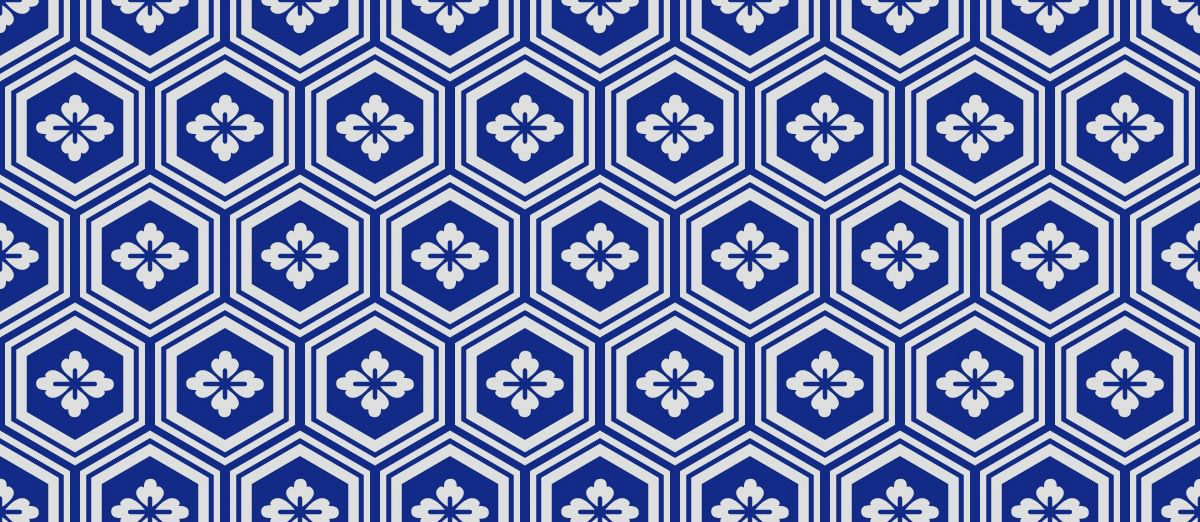
Un altro pattern che porta buon auspicio, questo disegno deriva dalla formadel guscio della tartaruga (esagono) ed è da qui che prende proprio il nome. Questo non solo rappresenta fortuna ma anche longevità. A seconda di come viene composto, gli esagoni formano diverse varianti per questo tipo di disegno, fra cui il Kikkō hanabishi e il Bishamon kikkō. Nel primo, il centro degli esagoni forma dei fiori, mentre il secondo si forma unendo tre esagoni.
Ichimatsu (a scacchiera)

Con diversi quadrati colorati disposti in modo alternato, questo pattern è molto simile al ginkgoam. Tessuto comune sin dall'antichità, questo disegno è diventato famoso come Ichimatsu nel XVIII secolo grazie all'attore kabuki Sanogawa Ichimatsu. Infatti, l'artista amava usare questa stoffa sul suo costume hakama. Oggi lo troviamo nei loghi ufficiali dei Giochi Olimpici e Paralimpici di Tokyo 2020.
Tachiwaki / Tatewaki (vapore ascendente)
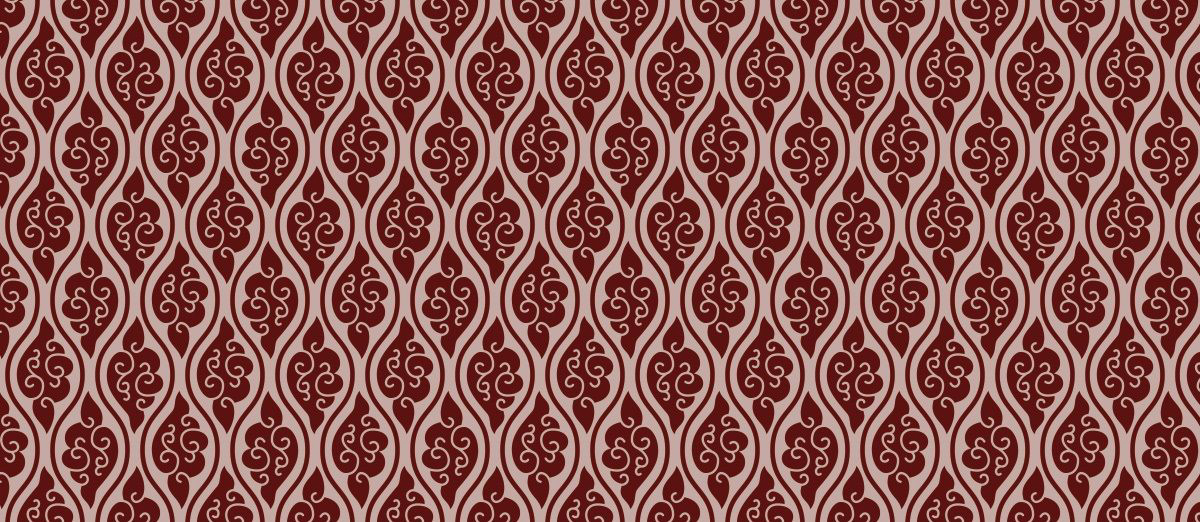
Con due linee curve che rappresentano il vapore che sale in modo stilizzato, questo patter era spesso usato nei kimono per le persone nobili e di alto rango nel periodo Heian. Il modo in cui queste linee curve si formano, serve a creare delle variazioni chiamate Kumo tatewaku (nuvola) e Sasa tatewaku (bambù).
Karakusa (impianto a spirale)
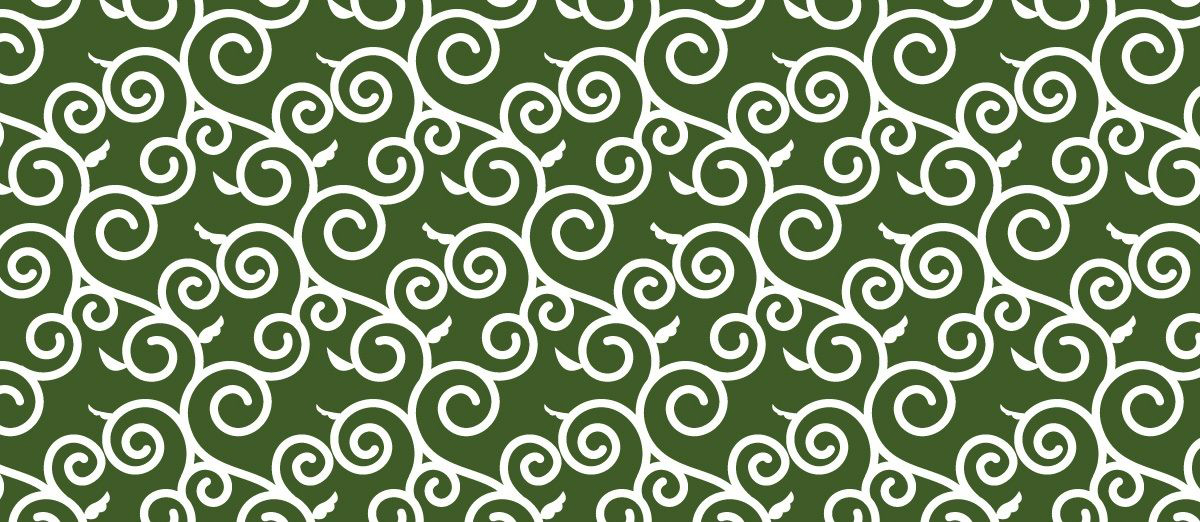
Introdotto in Giappone con l'arrivo della Via della Seta, le viti e spirali che si estendono in tutte le direzioni simboleggiano longevità e prosperità. Tuttavia, questo pattern è diventato famoso come modello di stoffa per furoshiki che i ladri usavano per portare via la merce rubata. Questo ci suggerisce che questo modello era così popolare perchè in ogni casa si poteva appunto trovare un furoshiki con questo disegno.
Kanoko (Cerbiatto)
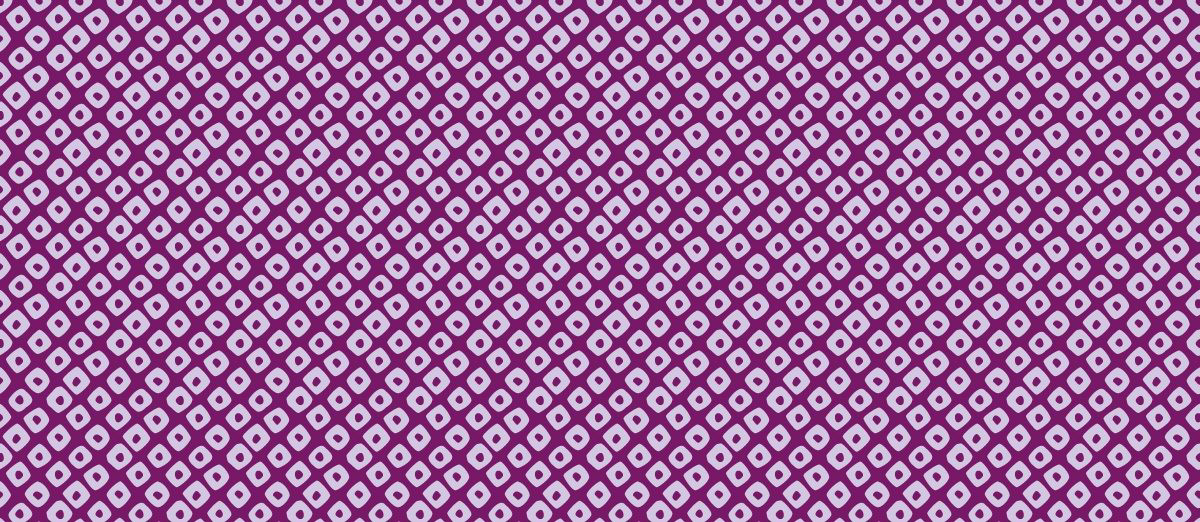
Rassomigliante il dorso maculato di un cerbiatto, questo pattern viene creato a mano con una tecnica di tintura particolare. Tuttavia, il processo laborioso lo fa diventare un tessuto molto ricercato, infatti i kimono con un motivo kanoko all-over sono considerati oggetti di grande lusso.
Hishi (Diamante)

Modello dalle forme geometriche, questo pattern si crea quando due linee parallele si intersecano. Spesso lo troviamo sulle ceramiche dell'antico periodo Jōmon. Inoltre, troviamo questo pattern in diverse varianti che includono il Waribischi, quattro diamanti combinati a formare un unico diamante, e Hanabischi, dove i petali dei fiori sono modellati in diamanti.
Mameshibori (Mame Tie-dye)

Questo patter era il modello più frequente sugli asciugamani da bagno nel periodo Edo. Il nome deriva infatti da un gioco di parole che significa sia piselli o fagioli, sia robusto e sano. Questo disegno rappresenta infatti la speranza di rimanere in buona salute e la maggior parte dei modelli del tempo sono creati con tecniche di tintura a stencil o stampa. Tuttavia, con il nome di shibori, possiamo capire che originariamente il disegno era fatto a mano con una tecnica di tintura particolare. Infatti notiamo che in antichità, queste forme erano molto più irregolari rispetto alle stampe di oggi.
Kit Kat, i 10 sapori più unici direttamente dal Giappone
"Have a break, have a Kit Kat" diceva il famoso slogan della pubblicità degli snack più famosi al mondo. Tuttavia, rimanere sul semplice cioccolato dopo qualche anno risulta quasi "noioso". Ecco perchè, soprattutto i giapponesi hanno inventato diversi nuovi sapori ed associazioni da gustare anche con i vostri amici!
Kit Kat, i 10 sapori più unici direttamente dal Giappone
Autore: Erika | Fonte: Guilty Yeats

photo credits: fpsconnexion
Dal Giappone agli Stati uniti, i Kit Kat sono ormai lo snack più famoso al mondo. Se anche voi amate queste barrette tanto quanto noi forse conoscete già i vari sapori presenti nel mondo. Tuttavia, per tutti coloro che sono ignari di questi gusti, oggi abbiamo raccolto quelli più famosi.
Kit Kat al Tè Verde
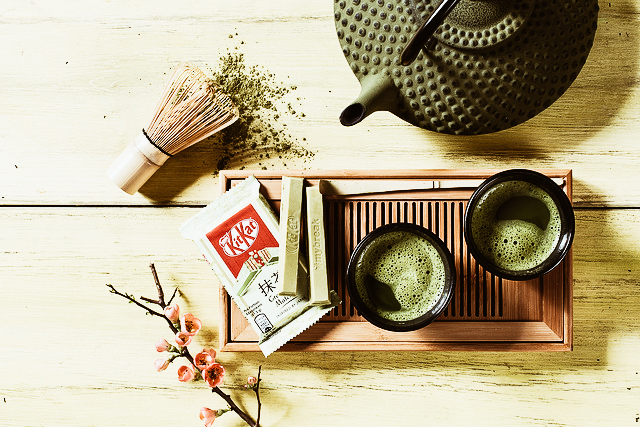
photo credits: wirtschaft-tv.com
Ovviamente questo non poteva non essere il primo della lista. Già presente anche in diversi supermercati italiani e internazionali, il Kit Kat al Matcha è sicuramente il preferito di tutti. Con il sapore tipico del tè verde giapponese, il Kit Kat matcha è uno snack molto soddisfacente e se anche voi amate il Matcha quanto noi, allora questa è la barretta che fa per voi!
Kit Kat al Limone
Si sa che gli agrumi e il cioccolato sono sempre una buona accoppiata. Infatti, Kit Kat ha creato un'edizione speciale dedicata alla Torta al Limone e le barrette hanno infatti spopolato. Sembra infatti di mangiare veramente una torta al limone!+
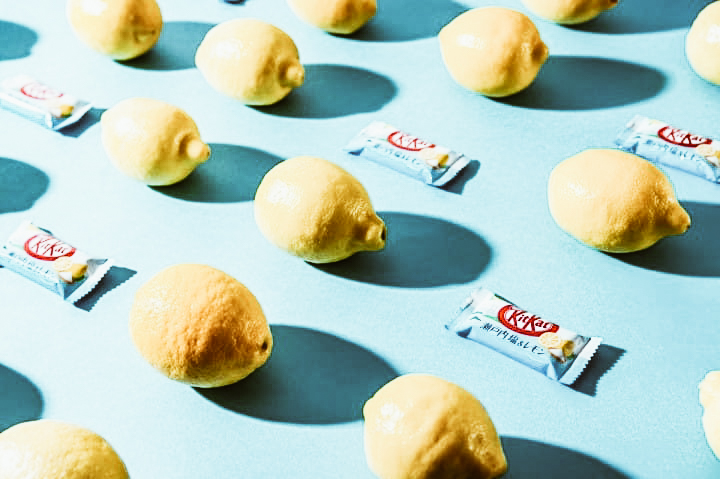
photo credits:matcha-jp.com
New York Cheesecake
I giapponesi sono dei ghiottoni di cheesecake, ne hanno per tutti i gusti, non poteva quindi mancare il Kit Kat alla cheesecake. Ad ogni morso di queste barrette è come far sciogliere una buonissima cheesecake al cioccolato nella vostra bocca. Questo potrebbe essere lo snack per eccellenza da poter usare anche come dessert!
Kit Kat Mandorla Rossa
Mirtilli rossi, cioccolato fondente e mandorle, questo è il delizioso tris per queste barrette, un sapore unico nel suo genere. Perfetti per uno spuntino ad ogni ora, un sapore dolce e croccante ad ogni morso!
Biscotti e crema
Se amate i biscotti e la panna, questa è l'opzione che fa per voi! Non solo ogni morso è un sapore cremoso di biscotto, ma unito al wafer croccate crea un mix incredibile. Uno dei migliori al mondo, siamo sicuri che soddisferà tutte le vostre voglie improvvise.
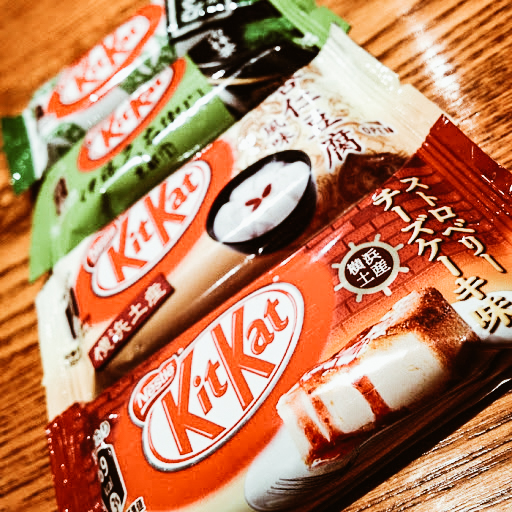

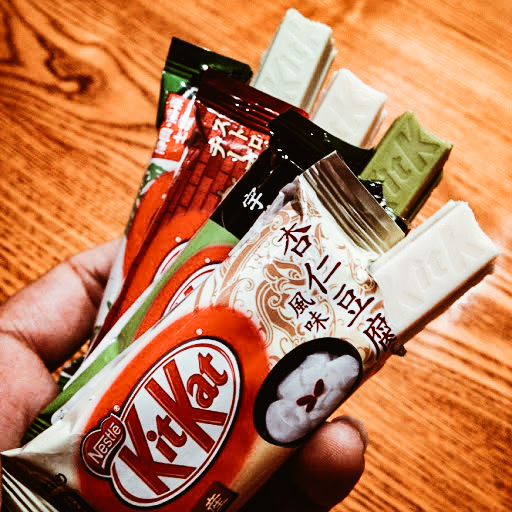
photo credits: wikipedia.org,food-spotter.com
Kit Kat ai fagioli Azuki
Rieccoci con la tipicità dei sapori giapponesi. Dolce ma non troppo, queste barrette hanno un sapore che ricorda il ripieno nei Dorayaki, ma con il cioccolato in aggiunta. Una delle varietà più rare ma assolutamente da provare!
Cheescake alle fragole
Uno dei sapori più diffusi in Giappone, queste barrette vanno assaporate ad ogni singolo morso. Con la fragola assaporerete queste barrette come se stesse mangiando una vera cheesecake. Inoltre, la croccantezza del wafer fa si che queste barrette abbiano tutto il necessario per qualificarsi come dessert.
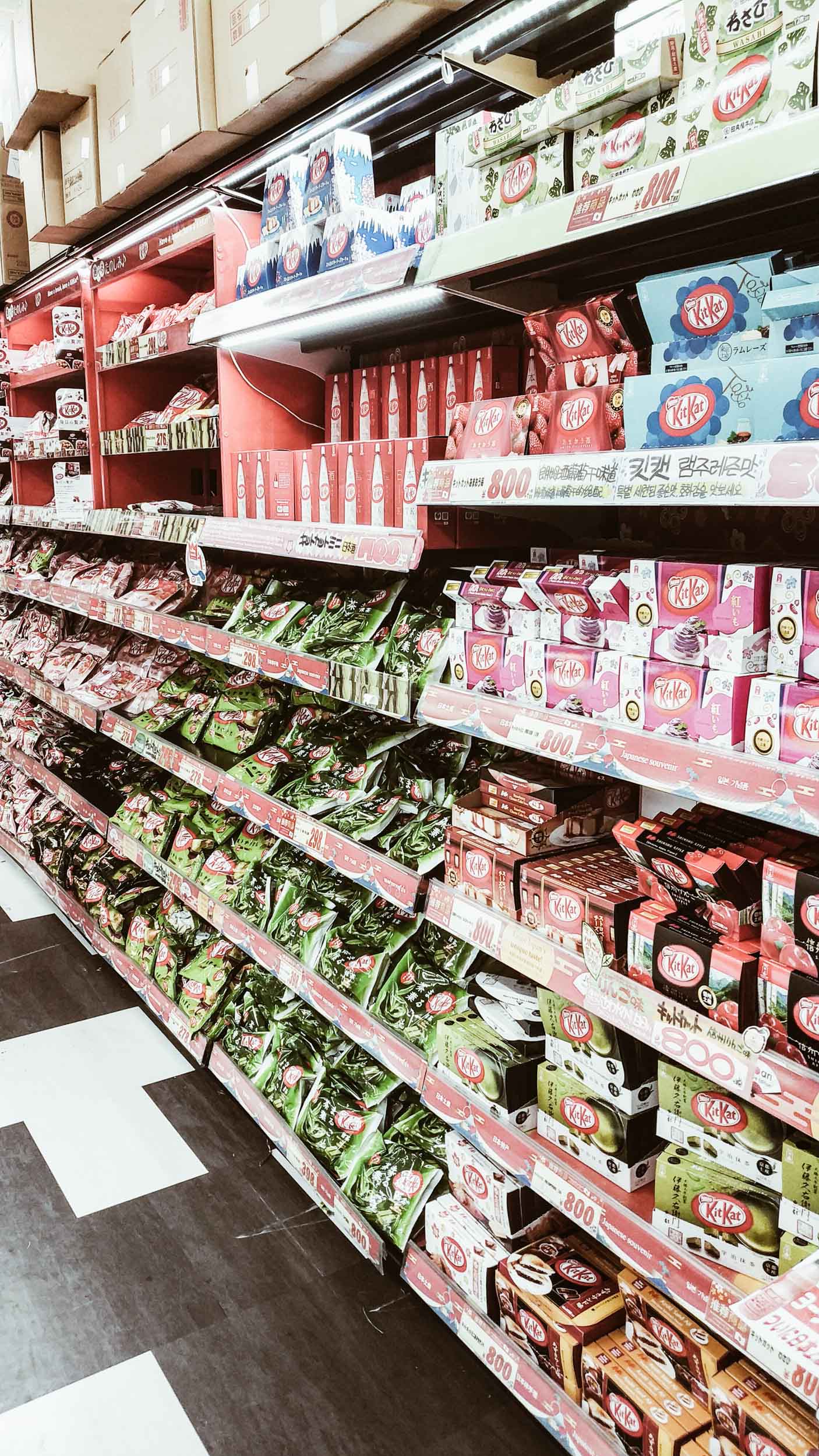

photo credits: wikipedia.org, fpsconnexion
Beni Imo Kit Kat
Questo è forse il gusto giapponese più particolare di tutti. Al sapore di patata dolce viola, potrebbe non sembrare lo snack di cui innamorarsi, tuttavia una volta provati cambiereteidea. Con una giusta quantità di dolcezza, lo rende perfetto anche per tutti colore che non amano le cose troppo dolci.
Kit Kat Lampone
Un altro giusto esclusivo del Giappone (purtroppo) è quello al lampone e se siete fan di questo frutto, questa barretta diventerà la vostra preferita in assoluto. Infatti, ad ogni singolo morso troverete la croccantezza del wafer e la freschezza della frutta e se questo non è abbastanza per farvi salire la voglia di provarle, allora non sappiamo cosa potrebbe farlo!
Purtroppo in Italia è difficile trovare tutti questi sapori, tuttavia potete rivolgervi ai negozi o ristoranti giapponesi della vostra città e vedere se ne hanno a disposizione. In alternativa, gli shop online offrono sempre un'ampia scelta! Qual è il vostro preferito?
Dove andare quando le frontiere riapriranno
Viaggiare in Giappone: dove andare quando tutto sarà passato
Autore: Erika | Fonte: The Japan Times
A causa della pandemia da COVID-19, al momento è impossibile viaggiare in Giappone, tuttavia nulla ci vieta di sognare ma soprattutto pianificare il nostro prossimo viaggio! Cominciamo raccontandovi di alcuni posti particolari che dovreste assolutamente inserire nella vostra "travel to do list".
Tohoku: Michinoku sentiero costiero
Se amate le lunge passeggiate e il trekking, questo è il posto che fa per voi. Infatti lungo la costa di Michinoku è possibile trovare un sentiero per tutti coloro che amano avventurarsi nella natura. Si tratta di un percorso escursionistico che si snoda per 1.025 chilometri lungo l'Oceano Pacifico dalla prefettura di Aomori meridionale fino alla prefettura di Fukushima.
Il sentiero segue il vecchio Sanriku Hamakaido, un'antica rotta commerciale che tagliava nelle profondità delle forese e radure. Questo non solo vi permetterà di vedere un inusuale lato del Giappone, ma anche di passare dei bellissimi momenti immersi nella natura.
Prefettura di Ishikawa: Festival di Kiriko di Noto
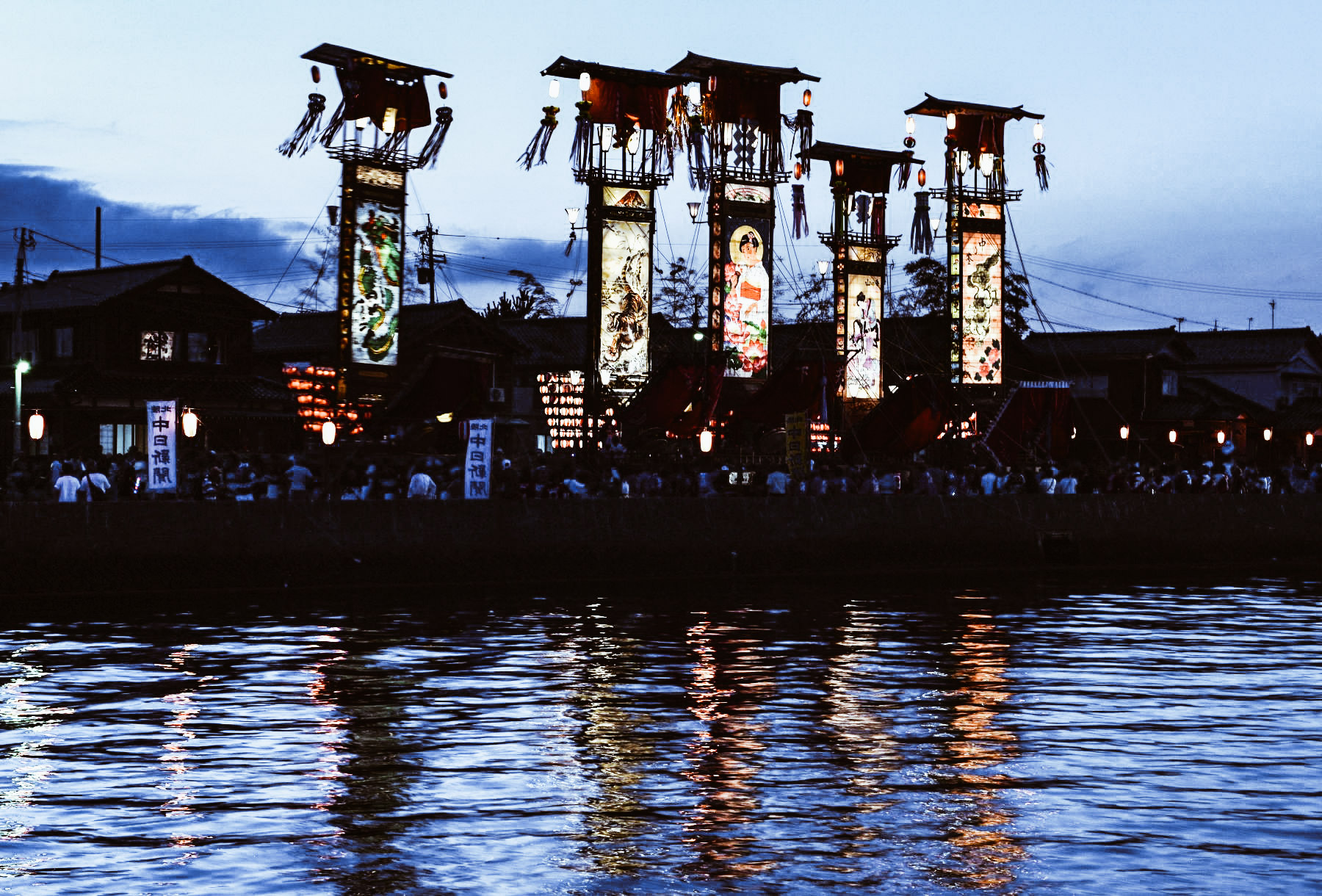
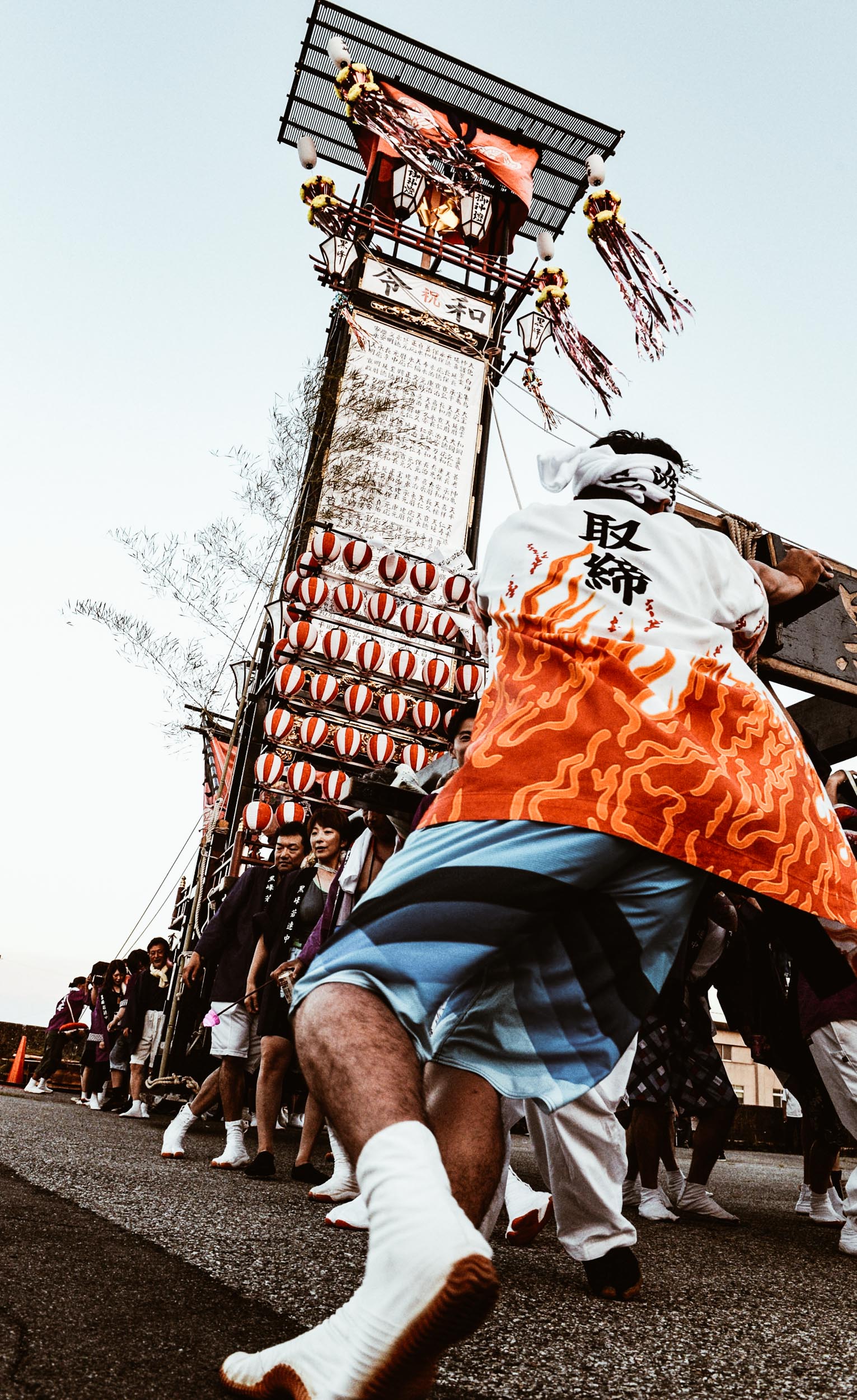
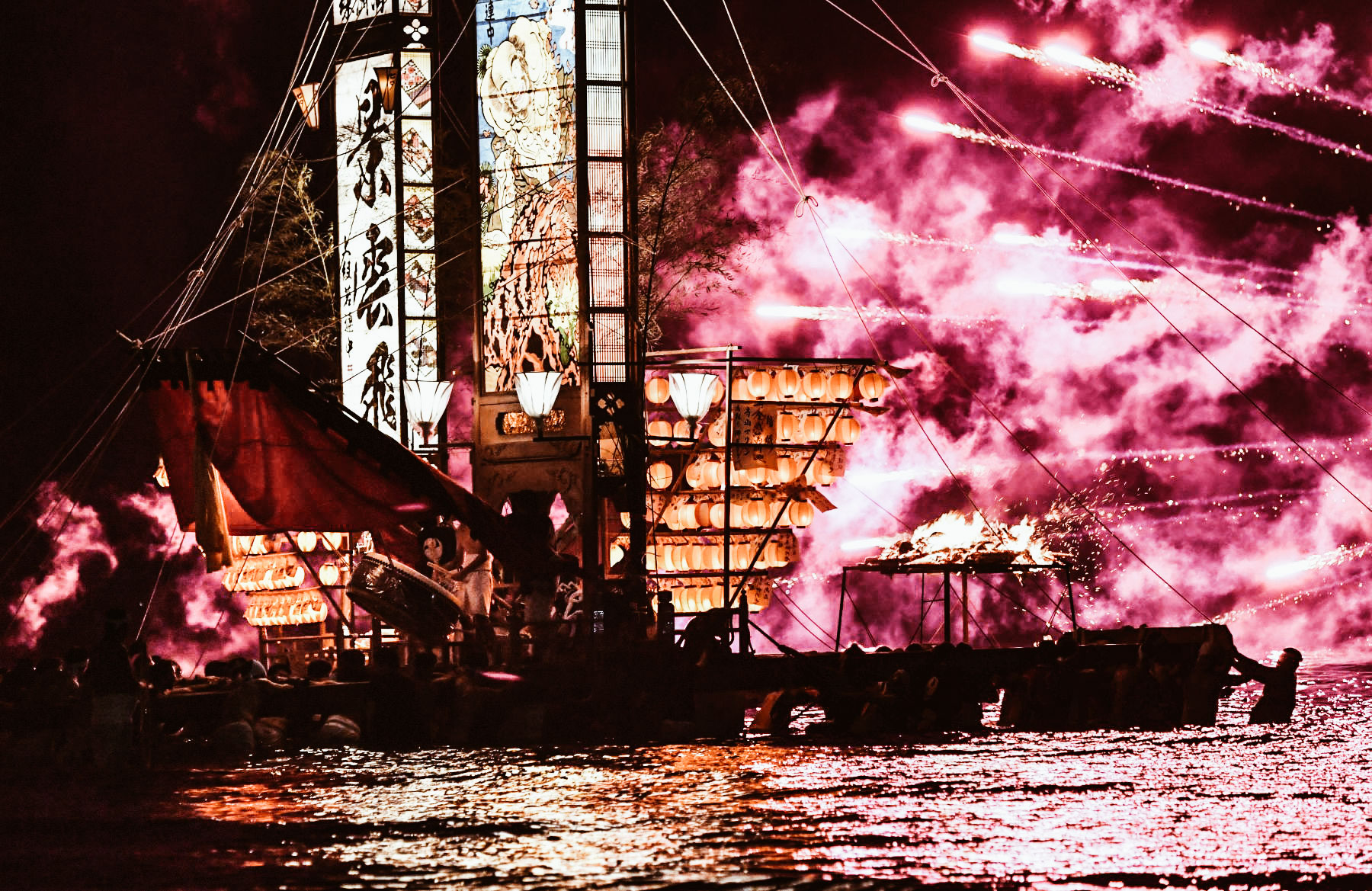
photo credits: japan-forward.com
Ci sono tantissimi festival in Giappone, alcuni più tradizionali, altri più eccentrici ed esuberanti. Tuttavia, il festival Kiriko di Noto (lanterne galleggianti) nella prefettura di Ishikawa è uno dei più suggestivi. Infatti, se avete mai avuto la fortuna di parteciparvi, sicuramente vi sarete sentiti teletrasportati nell'era Showa (1926/89). Tradizione vuole che ogni anno, chiunque appartenga alla prefettura ritorni infatti ad Ishikawa per portare la grande kiriko del proprio quartiere.
Ogni anno, uomini con happi coordinati di vari colori, trasportano kiriko da 15 metri e pesanti 2 tonnellate attraverso le strade della città accompagnati dal suono di flauti e tamburi.
Tuttavia, la penisola di Ishikawa offre anche tante altre attrazioni, come il castello di Kanazawa, una delle tante bellezze del sole levante. Quindi se state pianificando di viaggiare in Giappone, questa è sicuramente una delle mete da non perdere.
Tokyo: Le vie secondarie del quartiere Kita
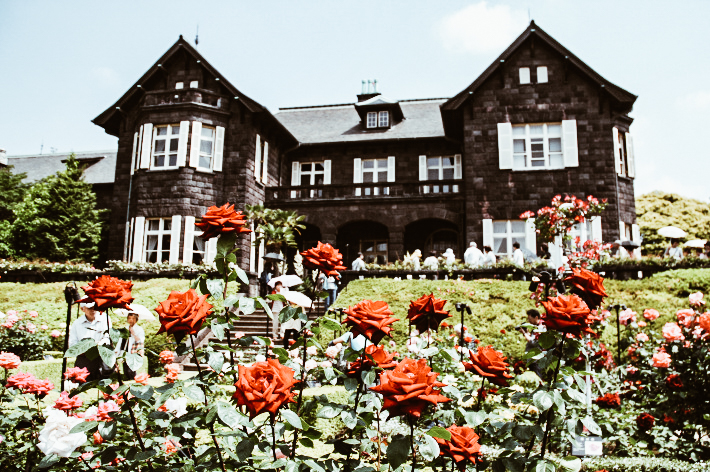
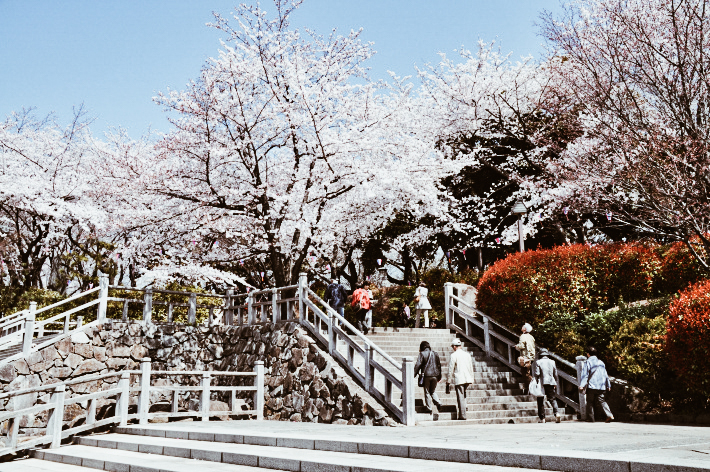
photo credits: tokyo2020.jp
Se siete mai stati a Tokyo, avrete notato che la città non ha solo i quartieri più conosciuti, ma è fatta di tante piccole vie secondarie che nascondono infiniti segreti e delizie. E' molto difficile scegliere cosa vedere per prima, ma il distretto di Kita è uno dei più particolari e meno conosciuti.
In queste piccole vie infatti è possibile trovare piccoli negozi a gestione famigliare che risalgono addirittura a prima Seconda Guerra Mondiale. Circondati dai negozio di Wagashiya (dolci tradizionali), qui si possono assaggiare i dango e i dolci più buoni e particolare della città.
Non dimentichiamoci poi dei bellissimi giardini giapponesi, con lanterne colossali e i tipici aceri giapponesi, cascate e rocce che rendono questo posto un sublime capolavoro.
Prefettura di Fukuoka: gli yatai
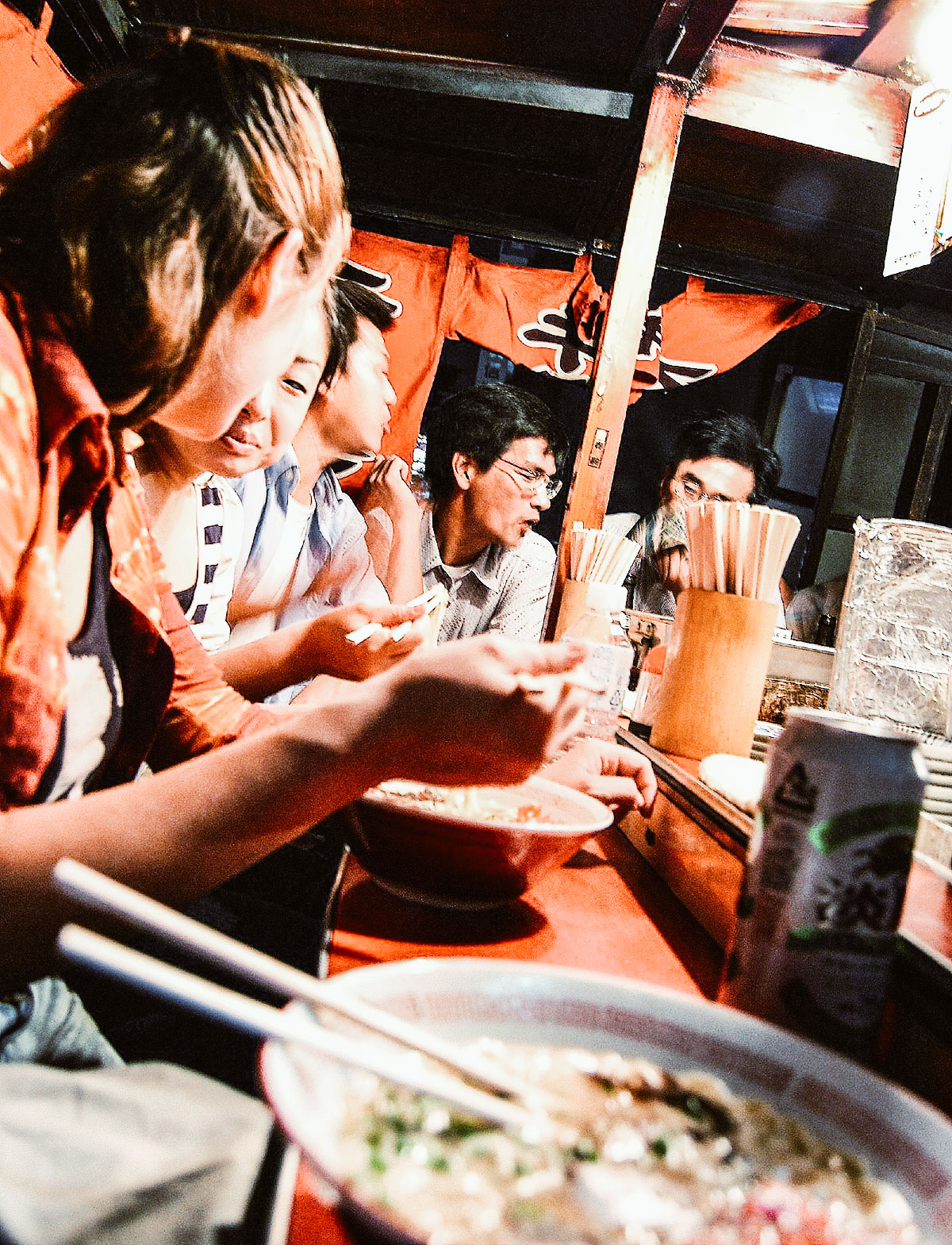
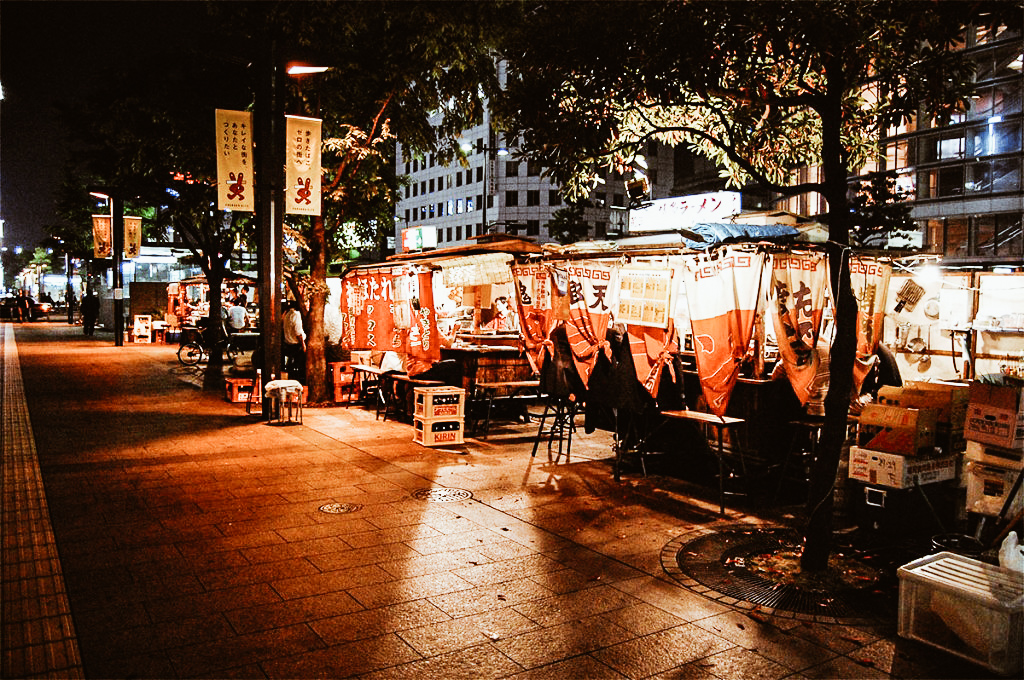
photo credits: gaijinpot.com
Viaggiare in Giappone vuol dire non solo visitare le varie città, ma anche provare tutte le tradizioni della cultura del Sol Levante. Infatti, nella prefettura di Fukuoka, verso le 5 del pomeriggio, le strade si riempiono in previsione della serata ed è qui che possiamo trovare i tanti yatai, bancarelle di street food. Al di fuori delle stazioni, agli angolo degli incroci più famosi, lungo il fiume e persino per le vie di Nakasu, troviamo queste bancarelle tipiche.
I cibi che vengono serviti qui, sono principalmente street food che si focalizzano sul Tonkotsu Ramen, la specialità di Fukuoka, ma anche yakitori e altre delizie. Tuttavia, una delle cose che li accomuna è l'atmosfera, la gente che affolla queste bancarelle e i manager che cercano di effettuare il maggior numero possibile di ordini. Un vero momento di tradizione e spaccato di vita giapponese da non perdere.
Prefettura di Tokushima: Valle di Iya
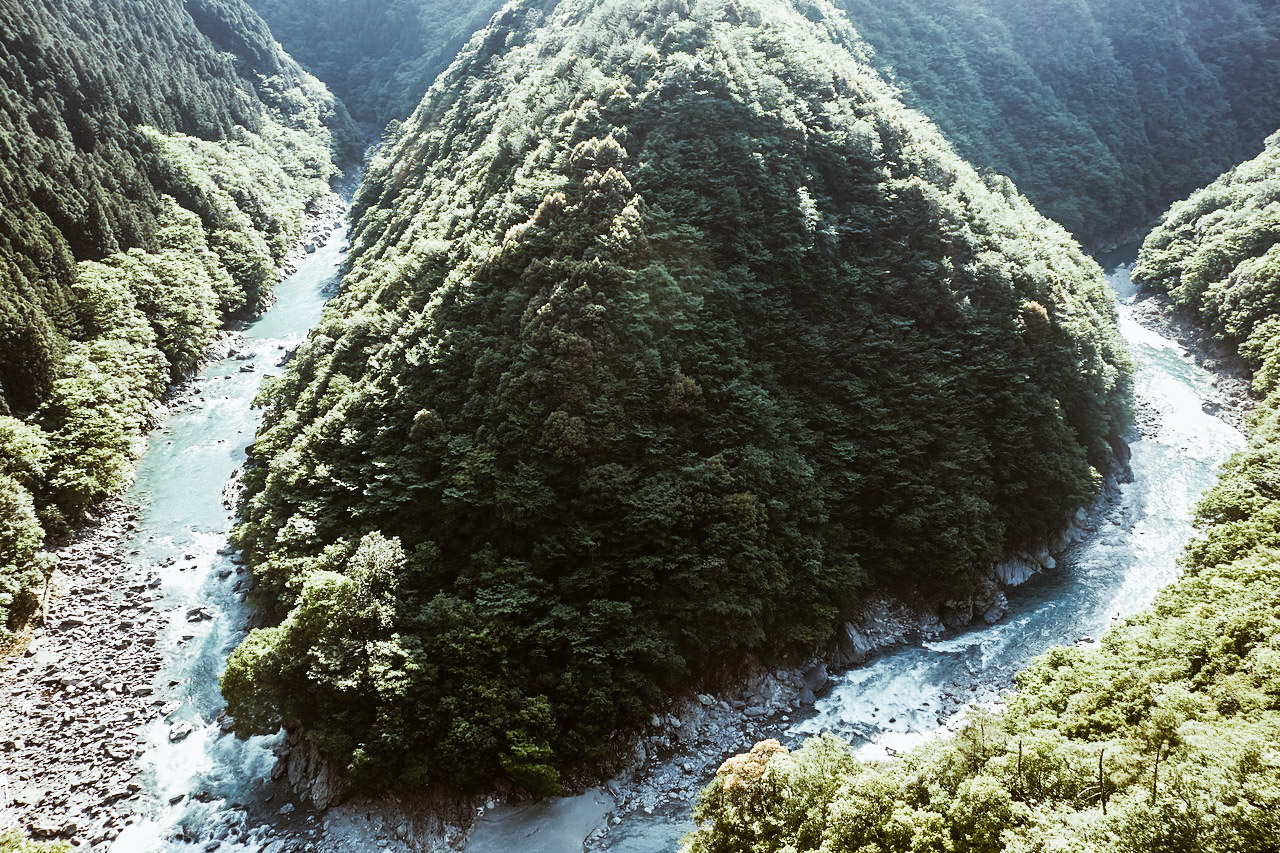
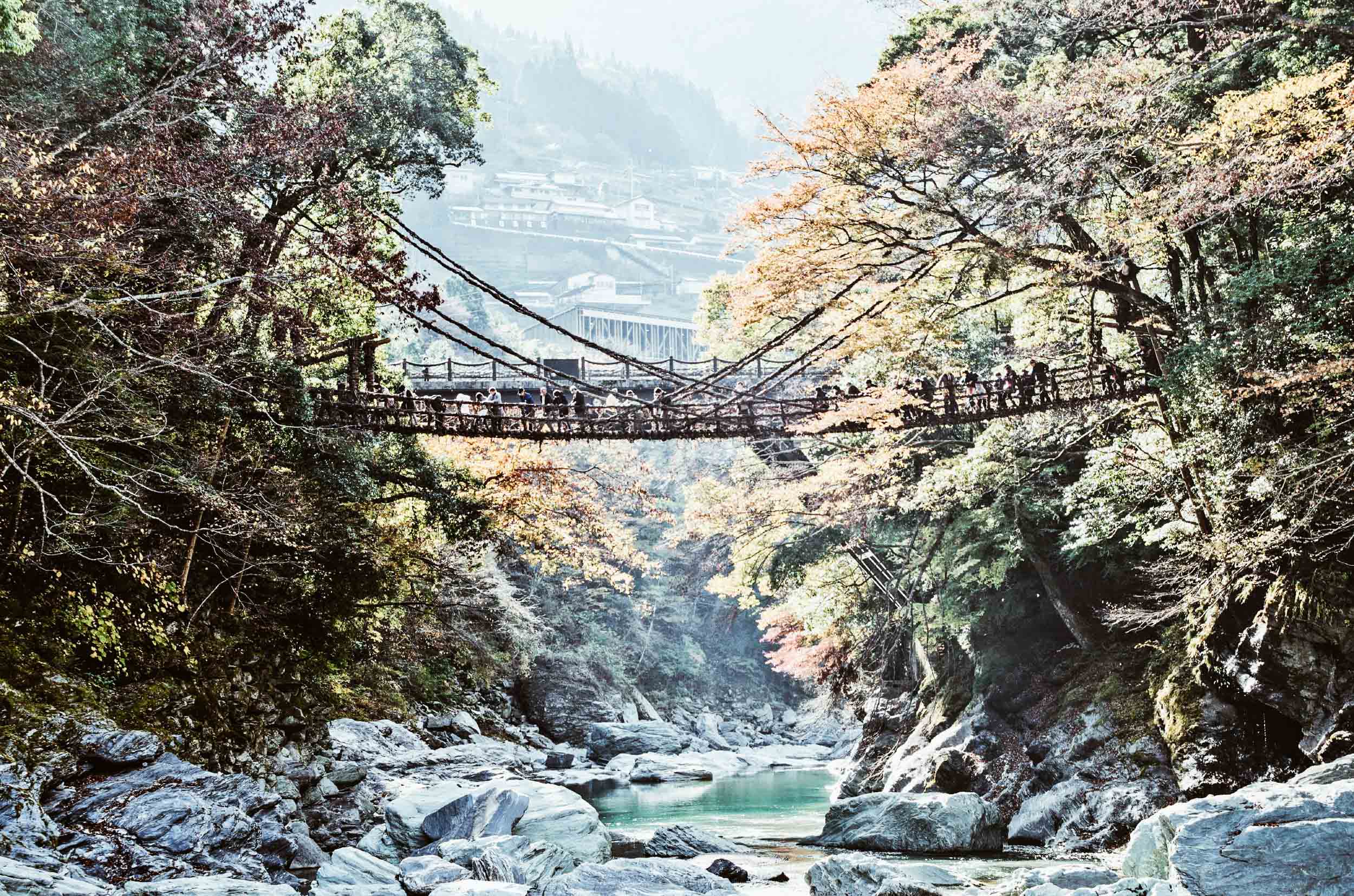
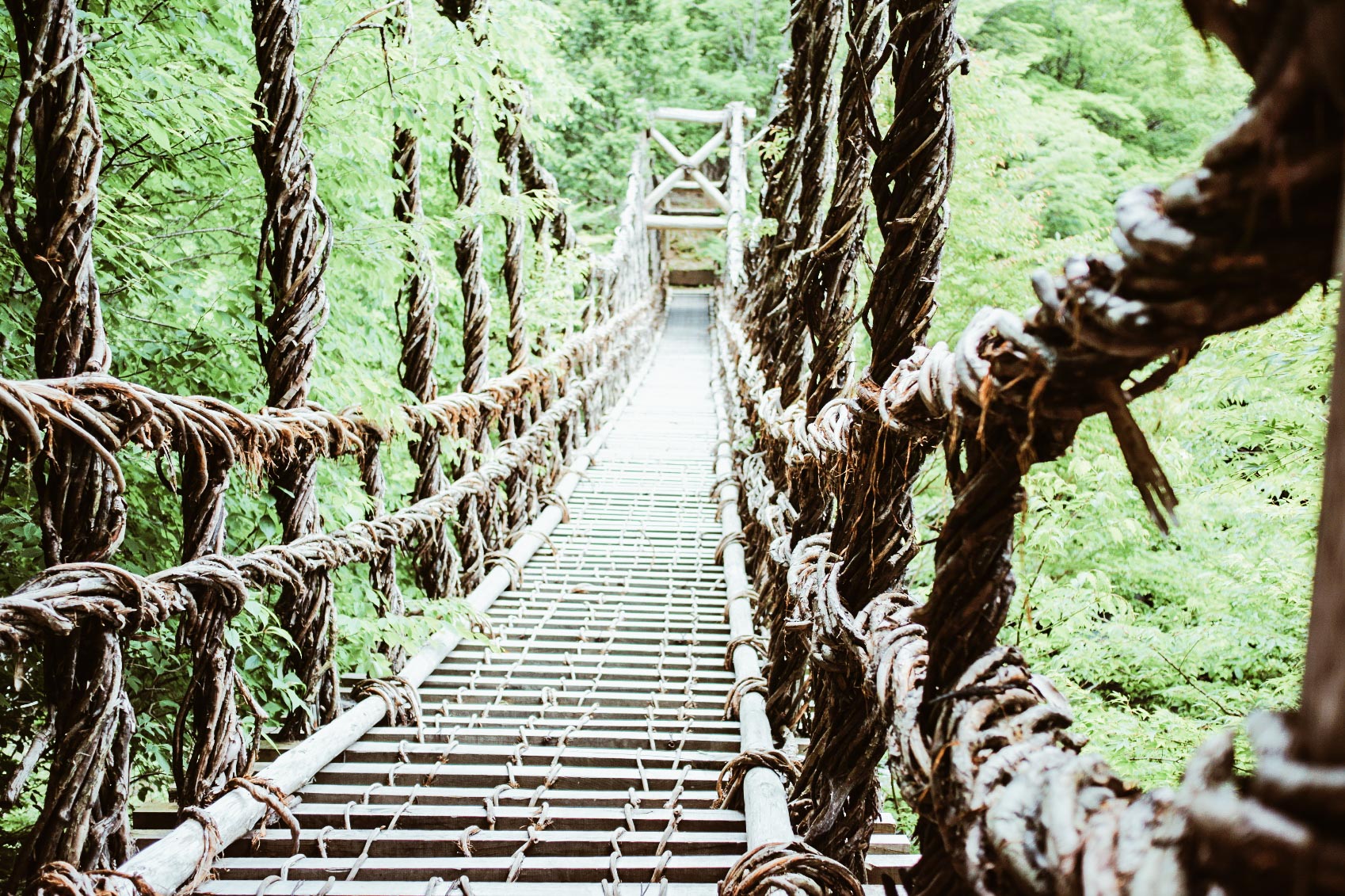
photo credits: tripadvisor.it, gaijinpot.com
Se state pensando di viaggiare in Giappone, non potete assolutamente non inserire questa meta all'interno delle vostre destinazioni da visitare. Nel cuore di Shikoku, troviamo la valle di Iya, un luogo quasi magico da esplorare, con acque turchesi e montagne rigogliose. Qui non solo è possibile immergersi nella natura e nella vera campagna giapponese, ma possiamo anche trovare alloggi a basso costo ed escursioni per tutti i turisti più avventurosi. Infatti qui è possibile scoprire un Giappone remoto, montuoso con case dal tetto di paglia, tradizionali poti di vite e i famosi 88 templi di Shikou. Una meta da non perdere.
Okinawa: Isole Kerama
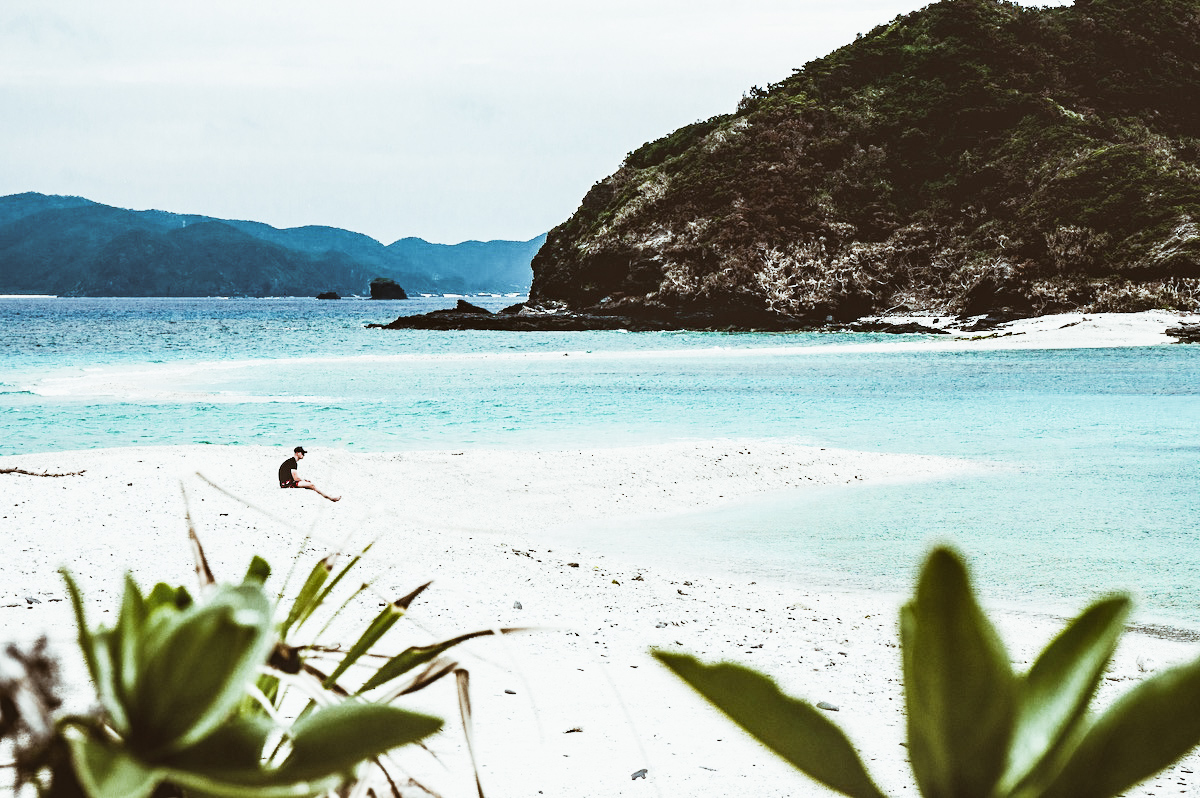

photo credits: watabi.it, viagginews.com
Okinawa è non solo uno dei posti più belli del Giappone, ma al mondo. Fra spiagge bianche e acque cristalline, le isole Kerama sono un gioiello della natura. Ci sono modi veloci per arrivare sull'isola principale, tuttavia intraprendere una crociera partendo da Kagoshima, vi aiuterà a scoprire posti unici al mondo. Passando fra le isole di Okinoerabujima e Tokunoshima, vedrete paesaggi spettacolari a voi sino ad ora sconosciuti. Fra brezze marine, lo snorkeling con le tartarughe e trekking sulle strade abbandonate dell'isola Zamami scoprirete un mondo nascosto fatto di coralli e pesci colorati.
Prefettura di Niigata: Museo della cultura del nord
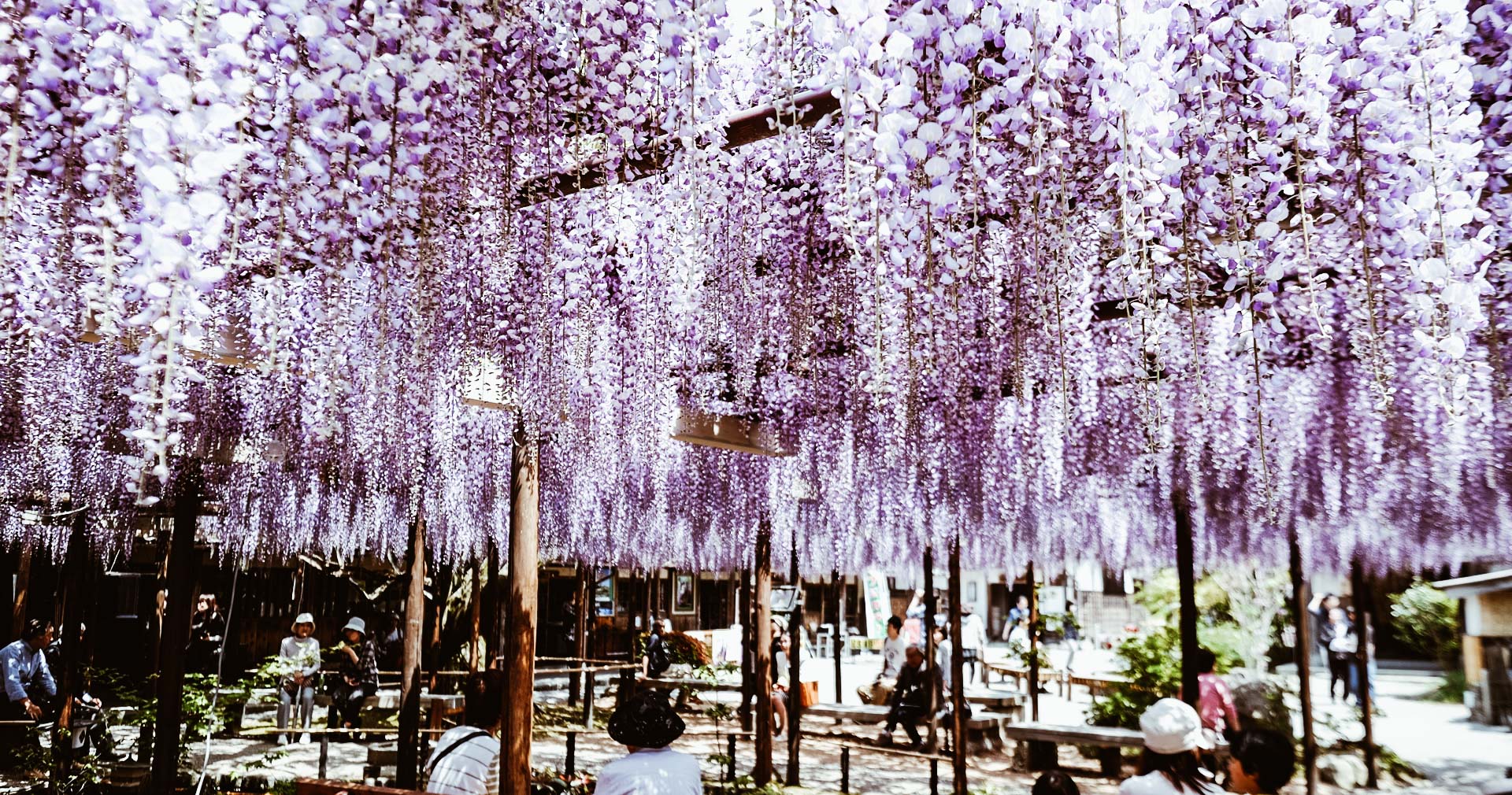
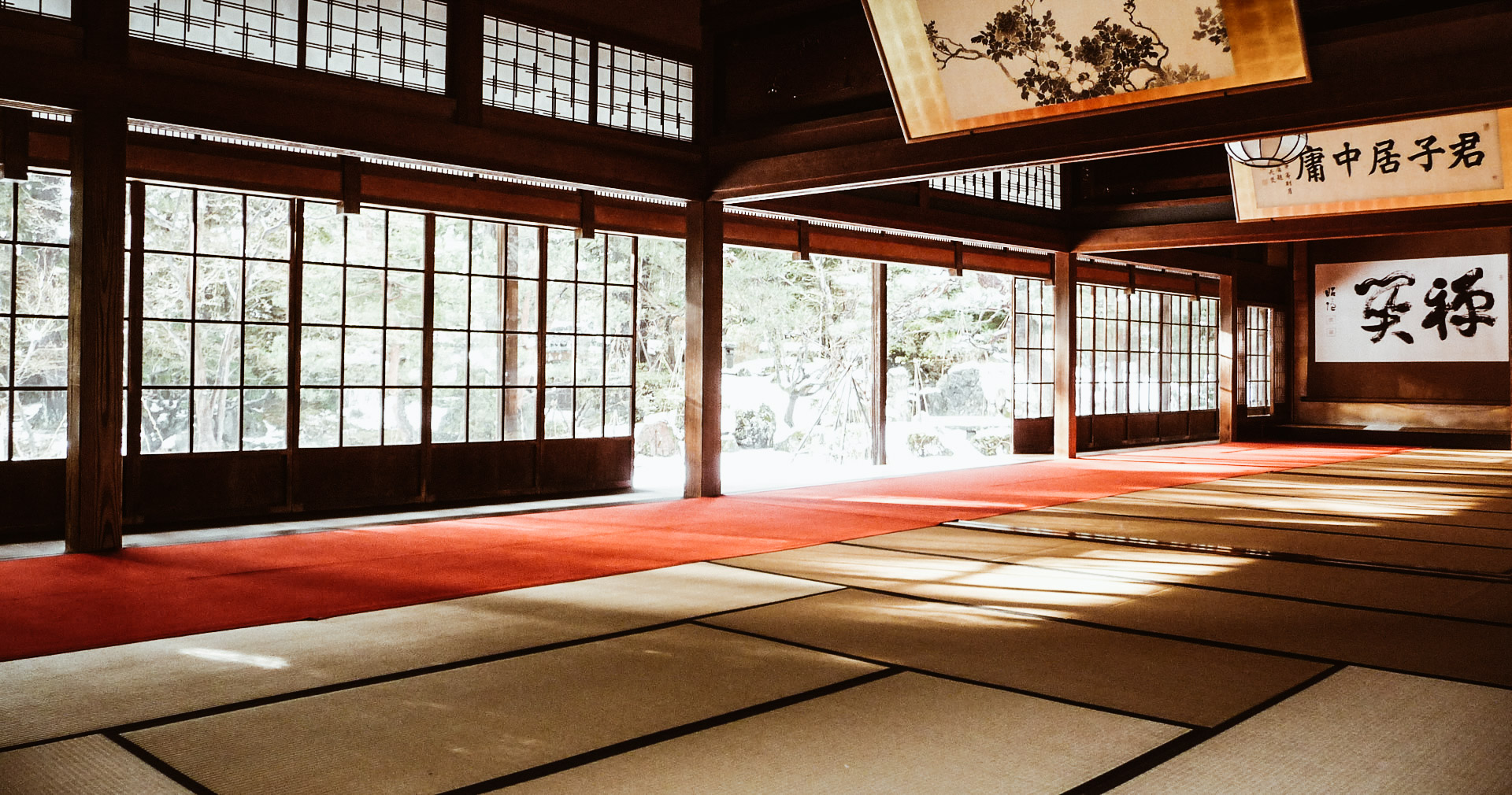
photo credits: hoppou-bunka.com
Trovate il Museo della Cultura del Nord nel villaggio di Soumi nell'ex palazzo della famiglia Ito. Qui, la residenza e il giardino sono stati trasformati in un museo privato dopo la guerra. Con un paesaggio creato da Taiami Tanaka nell'arco di 5 anni, l'edifico ospita una sala di ricevimento composta da 100 metri di tatami. Con un particolarissimo giardino decorato da cascate, lanterne di pietra, glicine e ponti in miniatura, il parco rimane una delle attrazioni principali della zona.
Non solo vi sentirete rilassati a godere della vista di questo paesaggi, ma vi sembrerà anche di ritornare indietro nel tempo. Uno dei luoghi più preziosi della prefettura.
Vi consigliamo decisamente di inserire queste mete se state pianificando di viaggiare in Giappone, e ovviamente siamo curiosi di sapere i vostri feedback!
Far East Film Festival 22, quest'anno in streaming
Far East Film Festival 22, quest'anno in streaming
autore: Erika
Quest'anno a causa dell'emergenza COVID-19 molti paesi si sono trovati a dover riorganizzare, o addirittura cancellare, diverse manifestazioni. Tuttavia, i nostri amici del Far East Film Festival hanno deciso di proseguire con la 22° edizione e hanno trovato un modo perfetto per rispettare le regole. Infatti, solo per quest'anno, il Far East Film Festival si terrà dal 26 giugno al 4 luglio via LIVE STREAMING, anche grazie alla piattaforma MyMovies live!

Face to face, Heart to Heart è il motto di questa stagione. Preso dall'omonima hit degli anni Ottanta, questa è la sintesi perfetta di questa nuova edizione.
Un’edizione che non accetta di arrendersi e che si svolgerà appunto online! Faccia a faccia, attraverso il vetro sottile dei display, cuore a cuore, perché la community del festival udinese è letteralmente una grande famiglia.
Dal 26 giugno al 4 luglio, la struttura del FEFF 22 verrà rimodulata. Infatti, non stiamo solo parlando di un trasferimento, con i film in concorso da guardare on demand, ma di una autentica trasformazione. Tutti i contenuti verranno adattati, per quanto possibile, alle dinamiche dello streaming.
Durante questi mesi di lockdown, Il pubblico ha già frequentato in massa la piattaforma MyMovies come sala virtuale. Infatti, sarà proprio qui che avverrà lo streaming online di tutti i film in concorso. Ovviamente, il tutto non sarà esclusivamente un serbatoio di titoli, ma il punto d’incontro per tutti i partecipanti al Far East Film Festival.
Inoltre, dal 30 giugno al 2 luglio, inoltre, troverà spazio online anche Focus Asia, cioè l’area Industry del festival, con la sezione FEFF in progress (la prima e unica piattaforma europea dedicata ai film asiatici in post-produzione), il project market e un ricco programma di webinar.
La campagna di accreditamento partirà fra qualche giorno, il 1° giugno per l'esattezza e a breve lo staff del FEFF 22 condividerà la lista completa del palinsesto. Che l’ennesimo viaggio, l’ennesima sfida, l’ennesima avventura abbia inizio!








